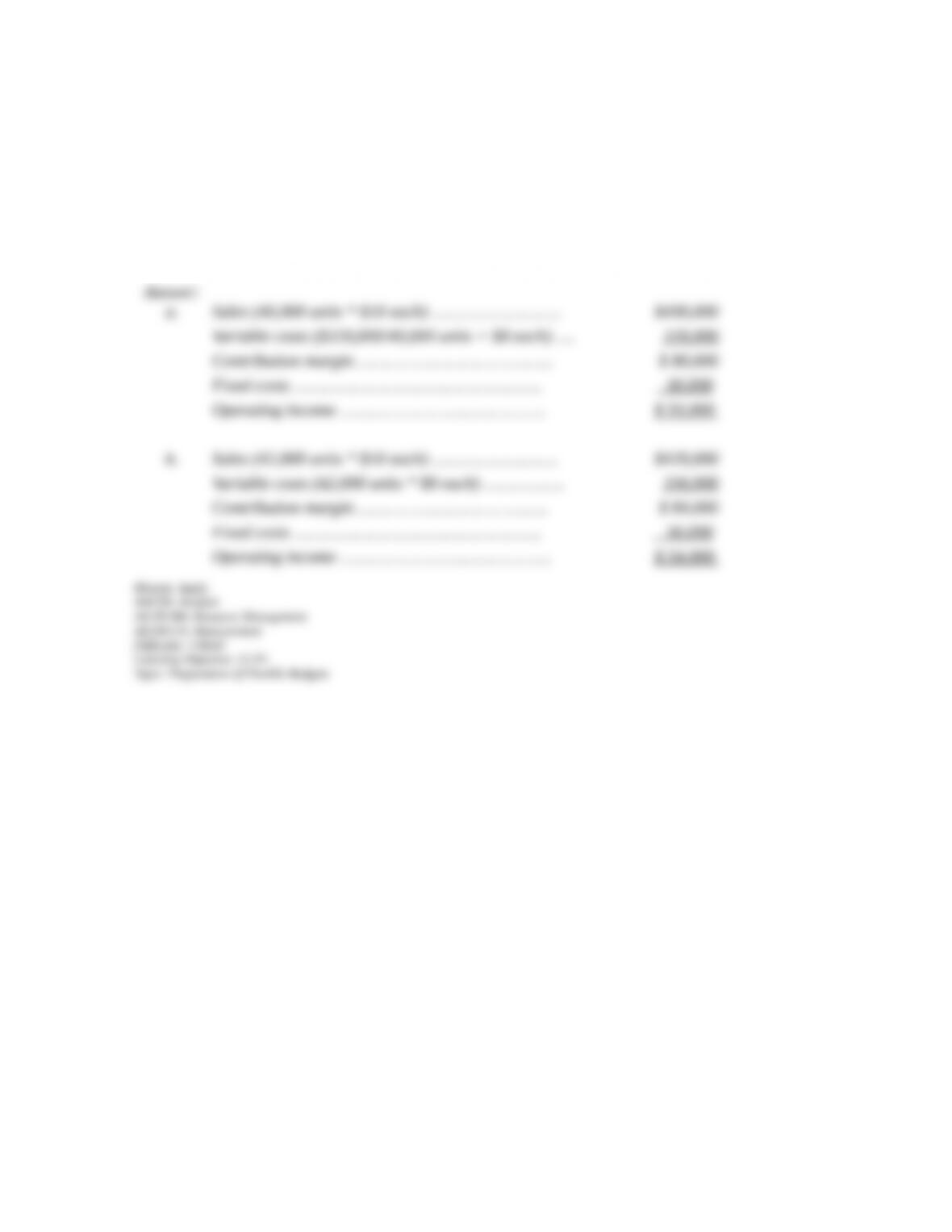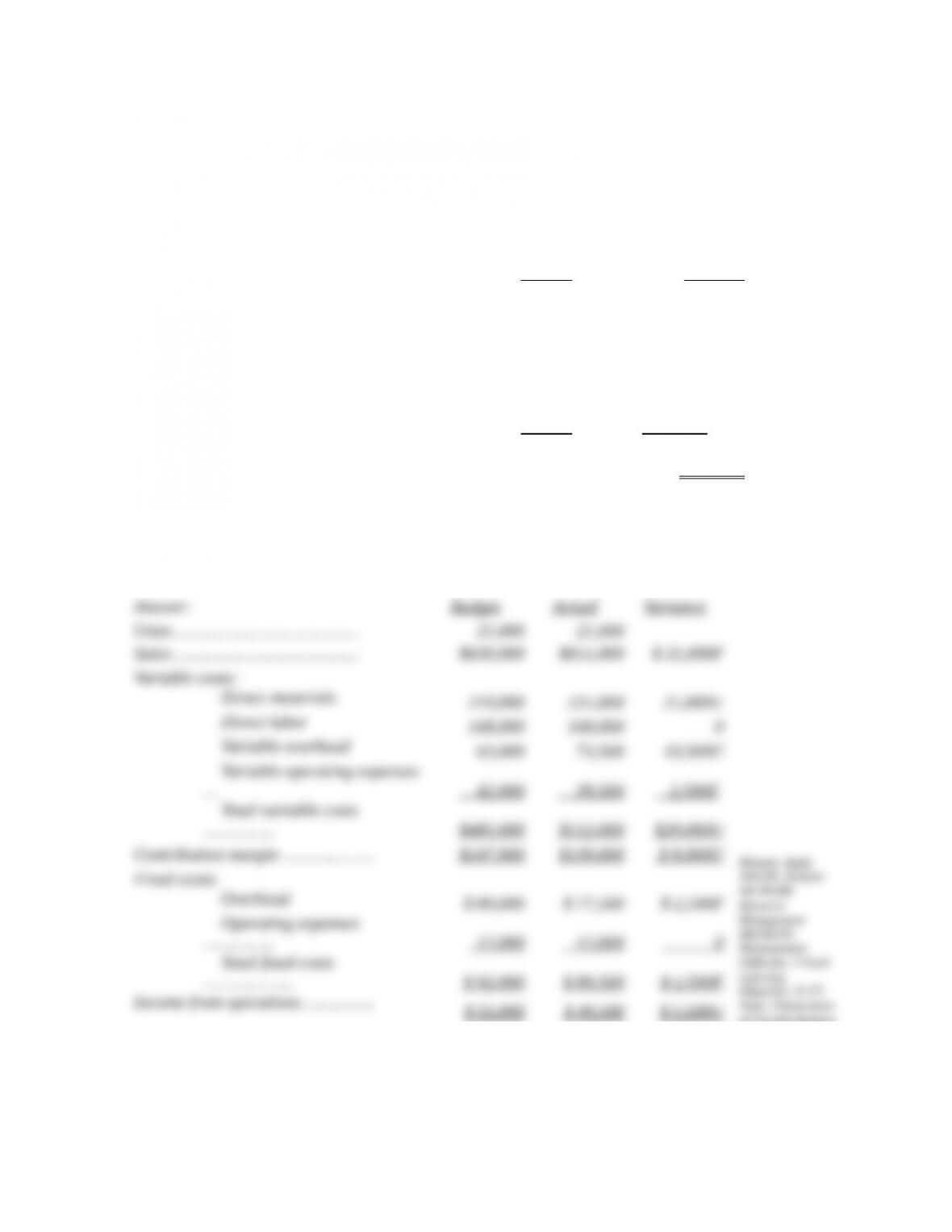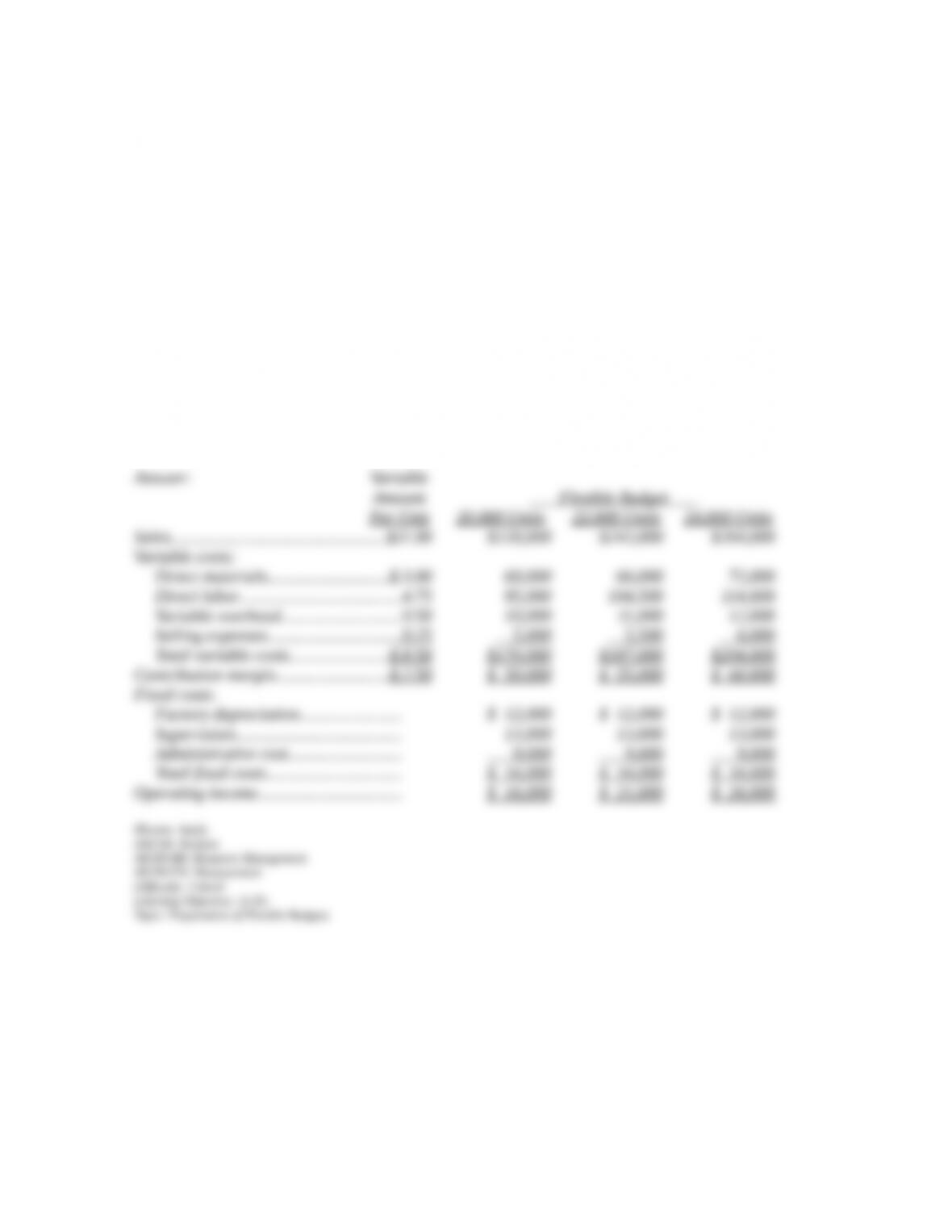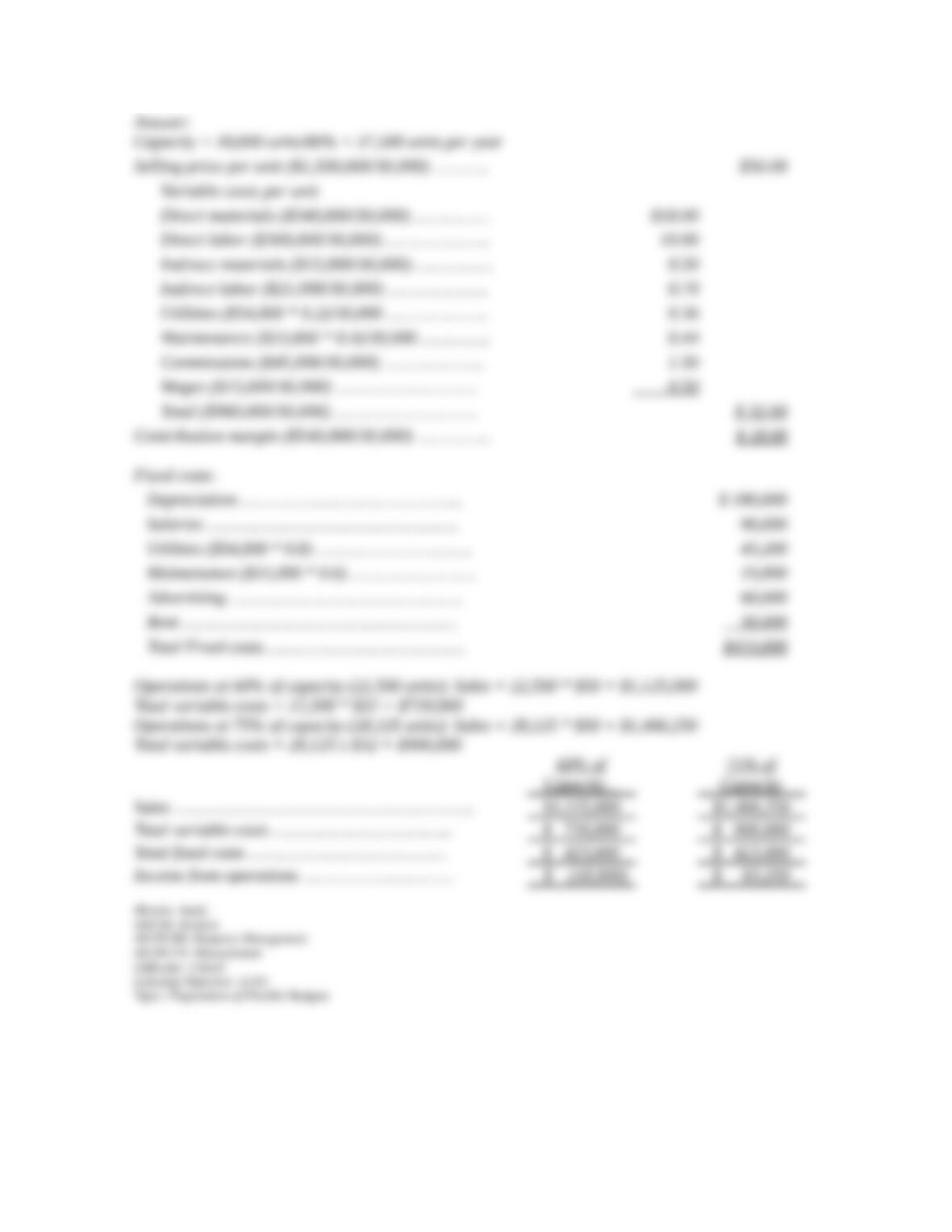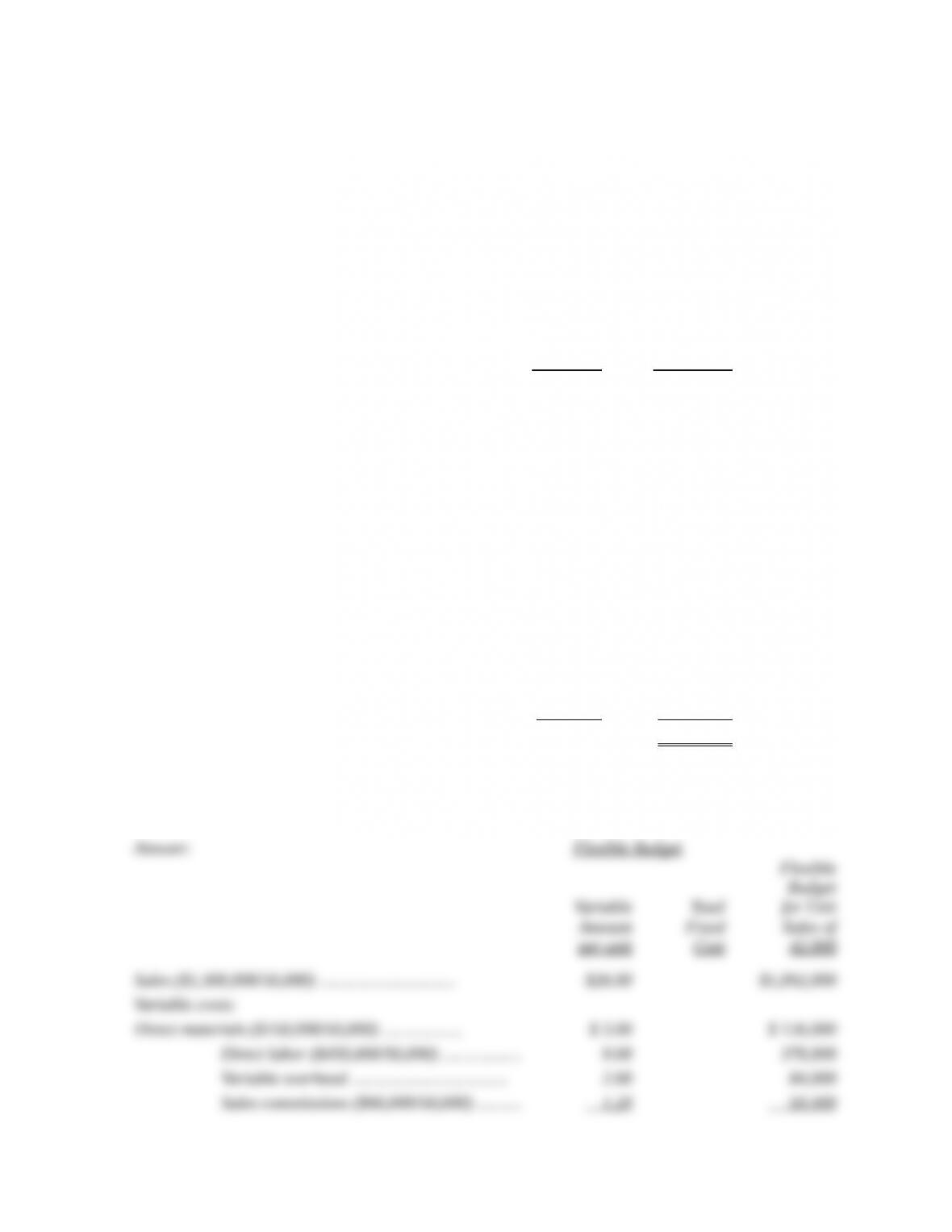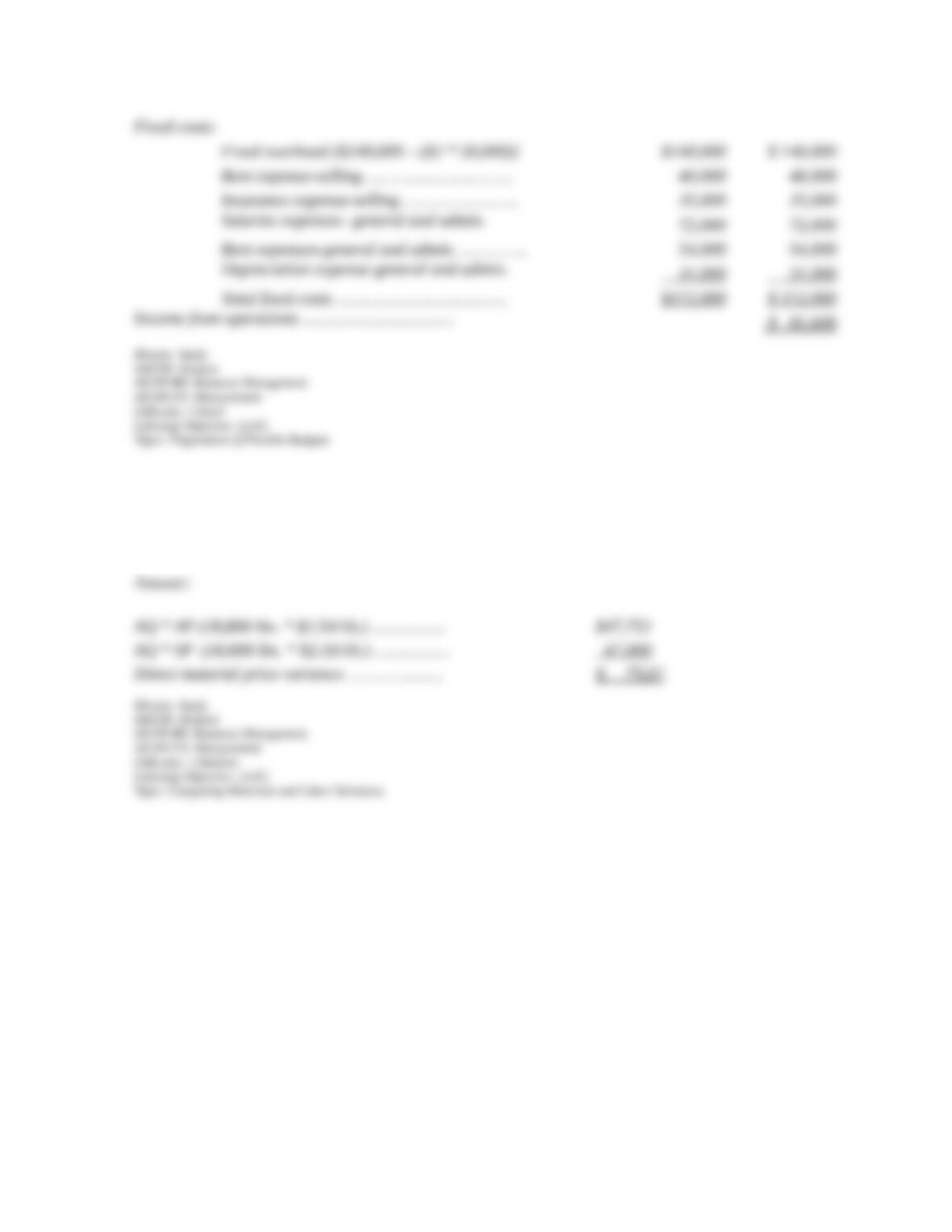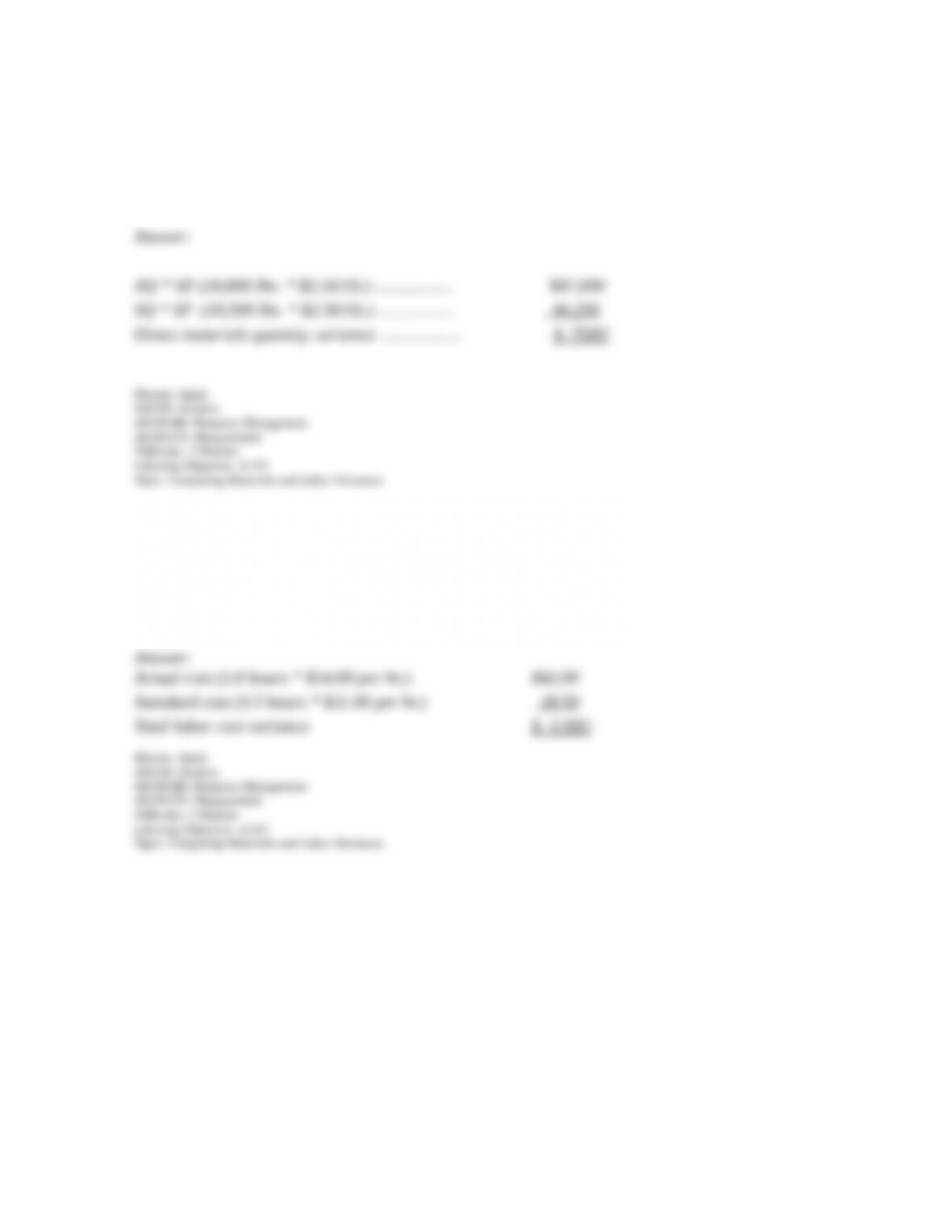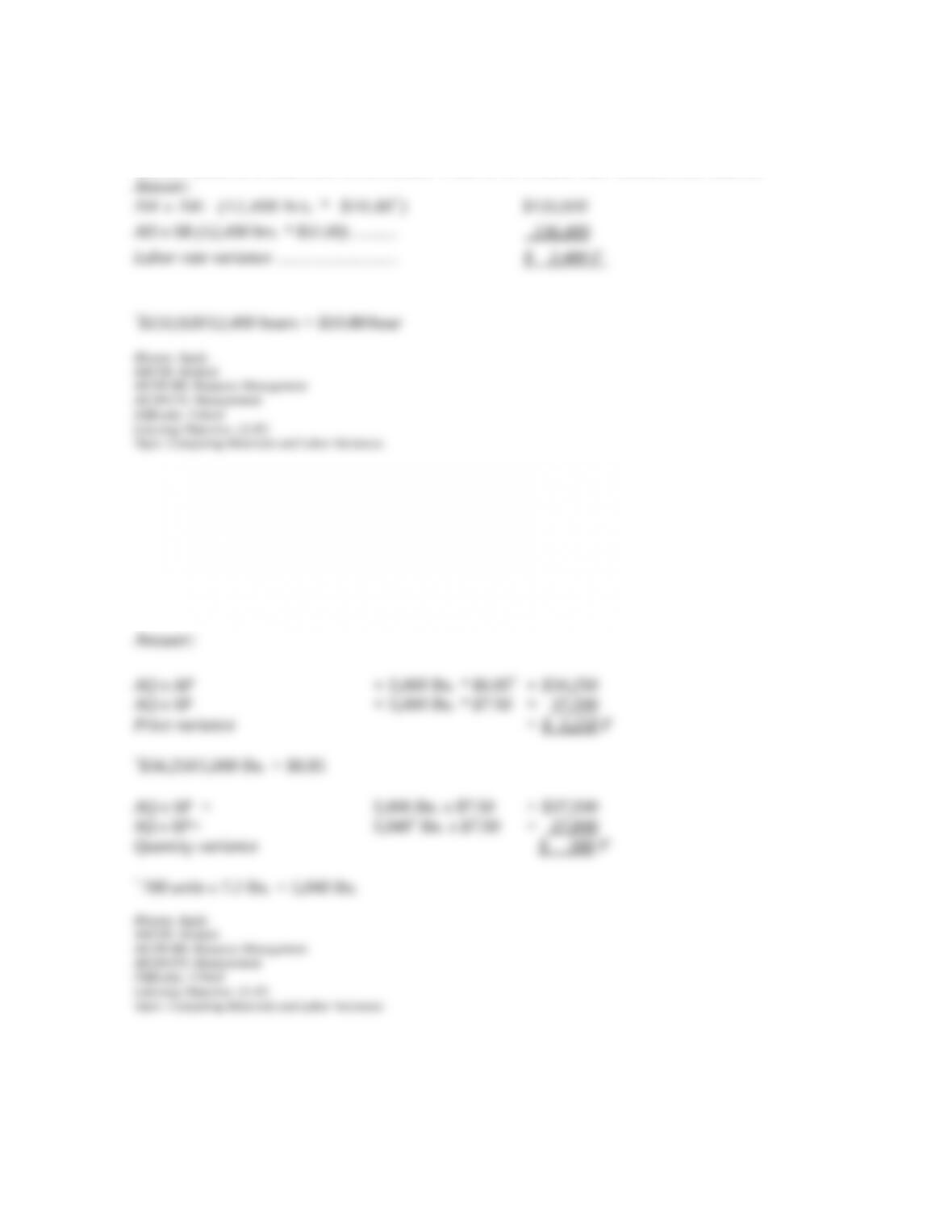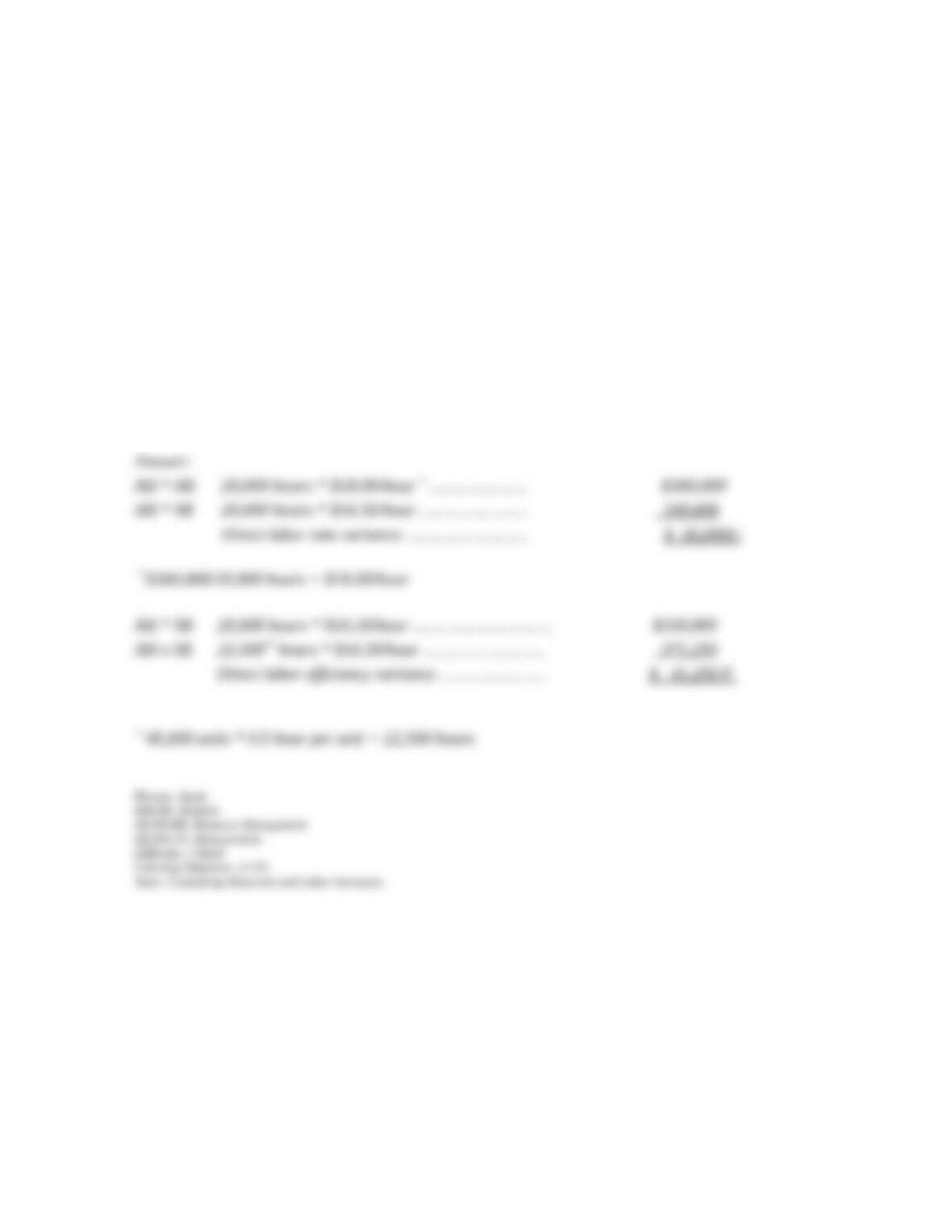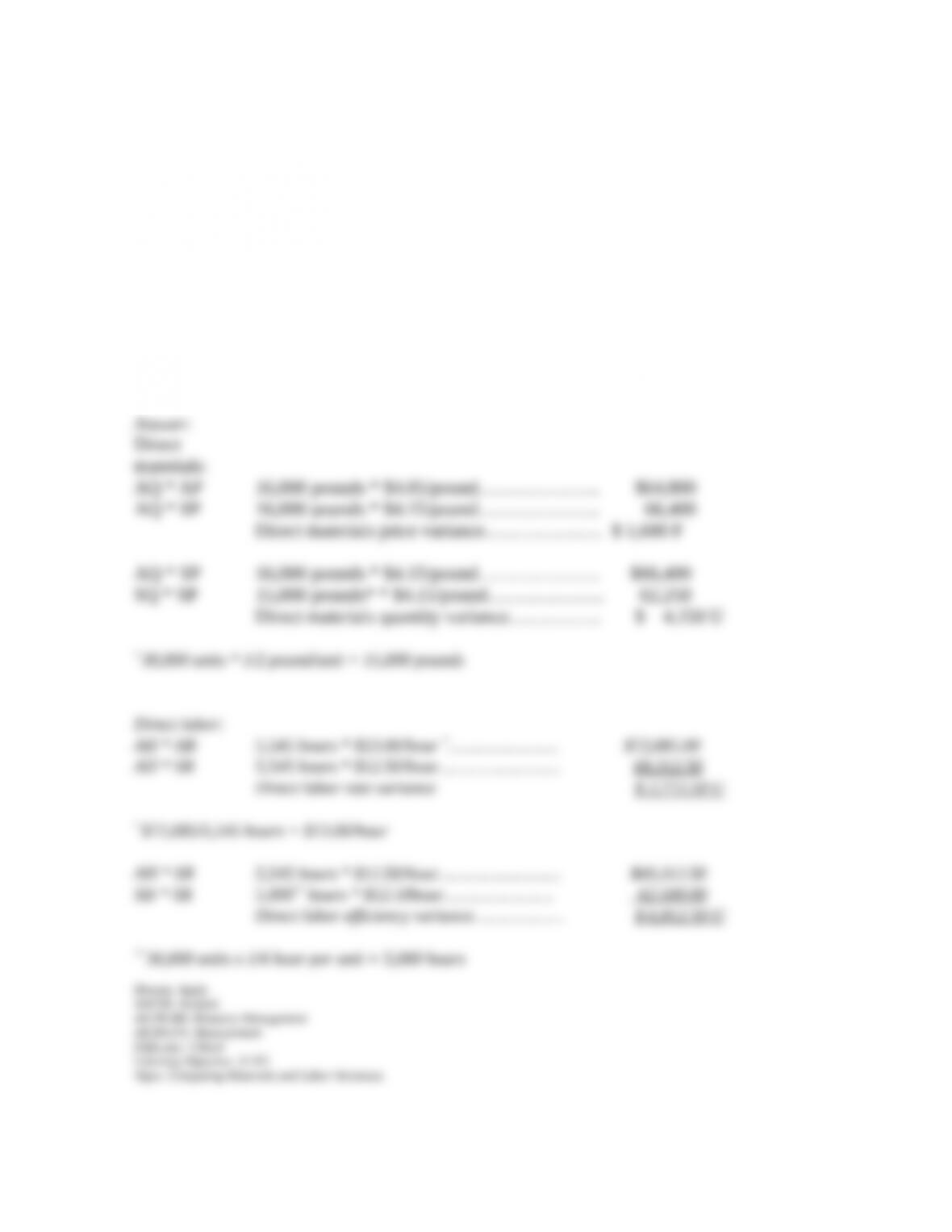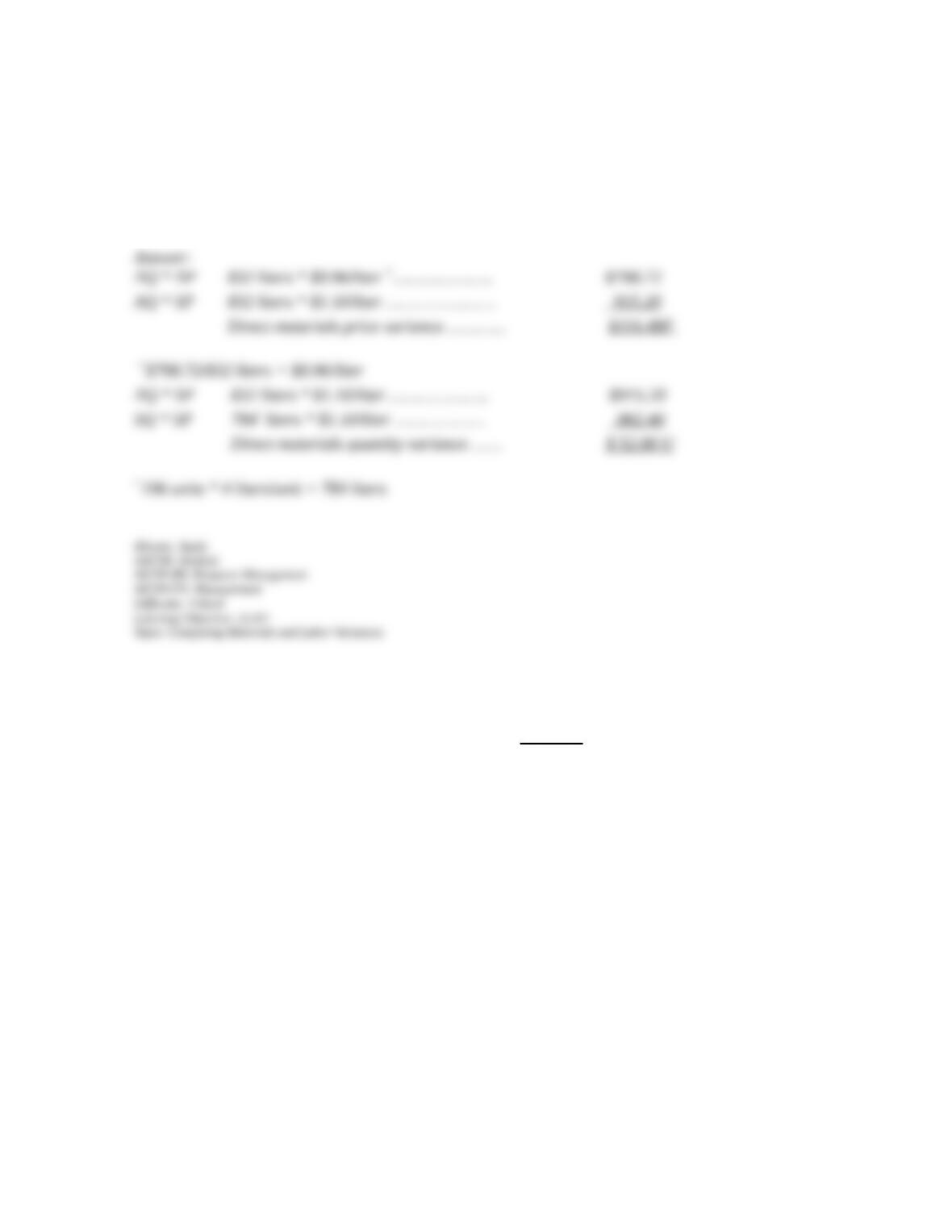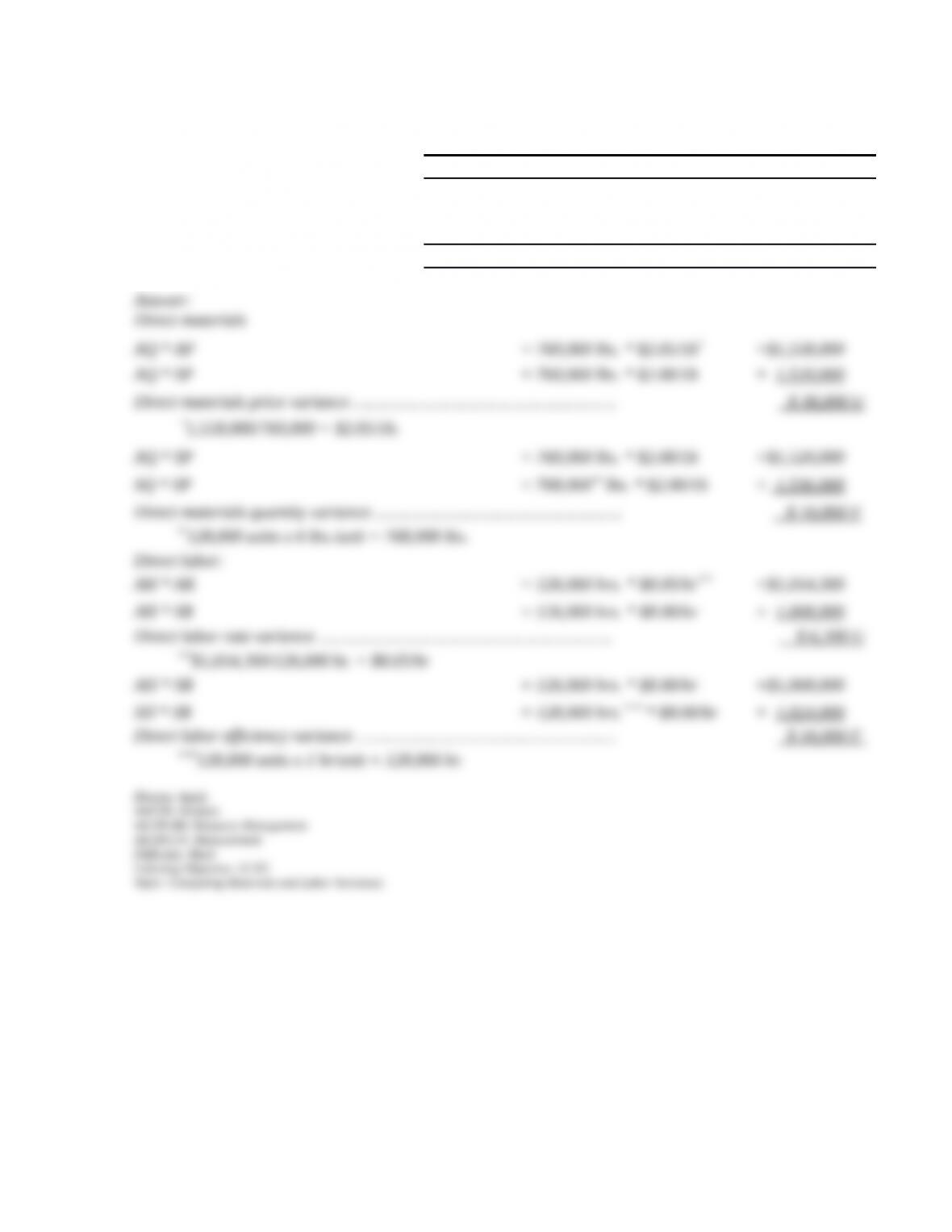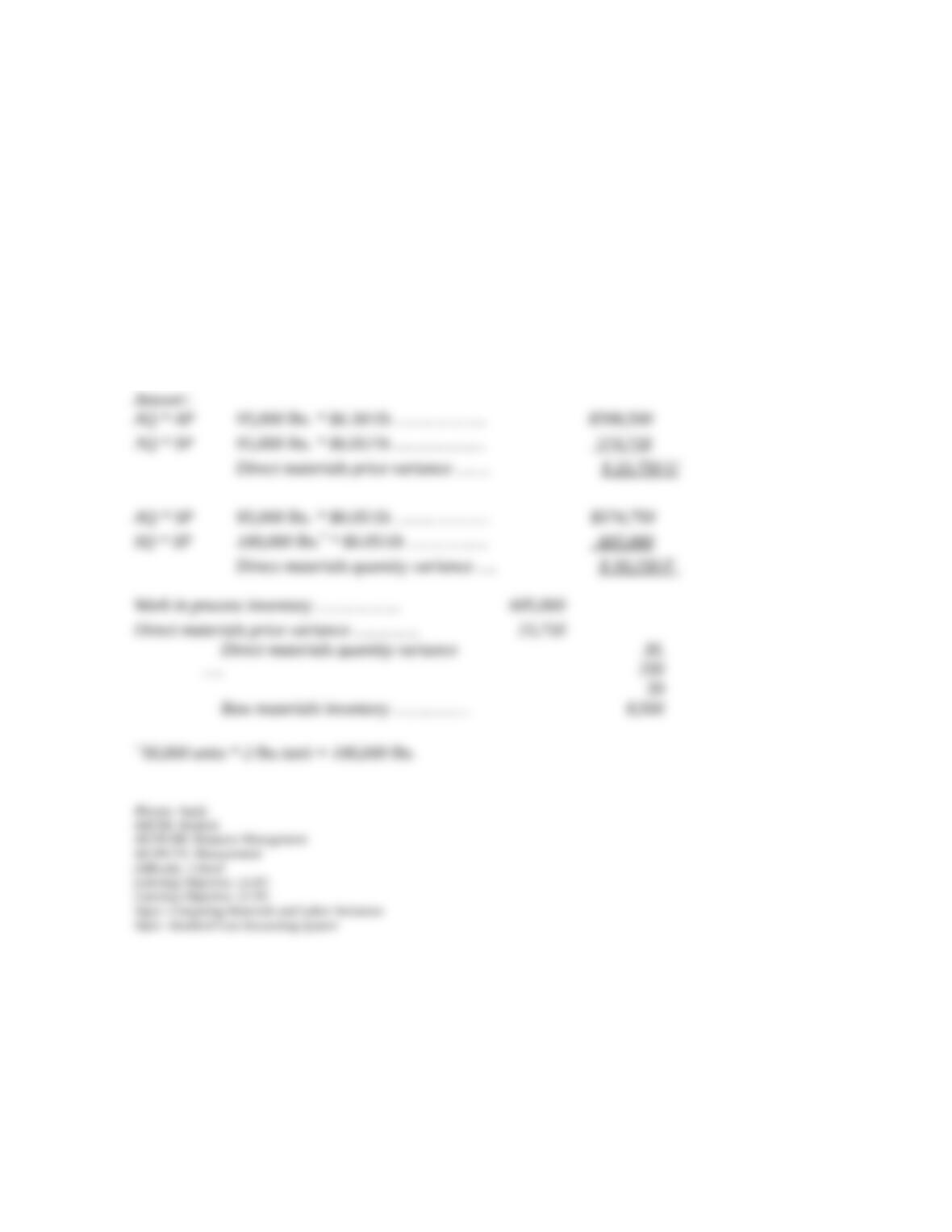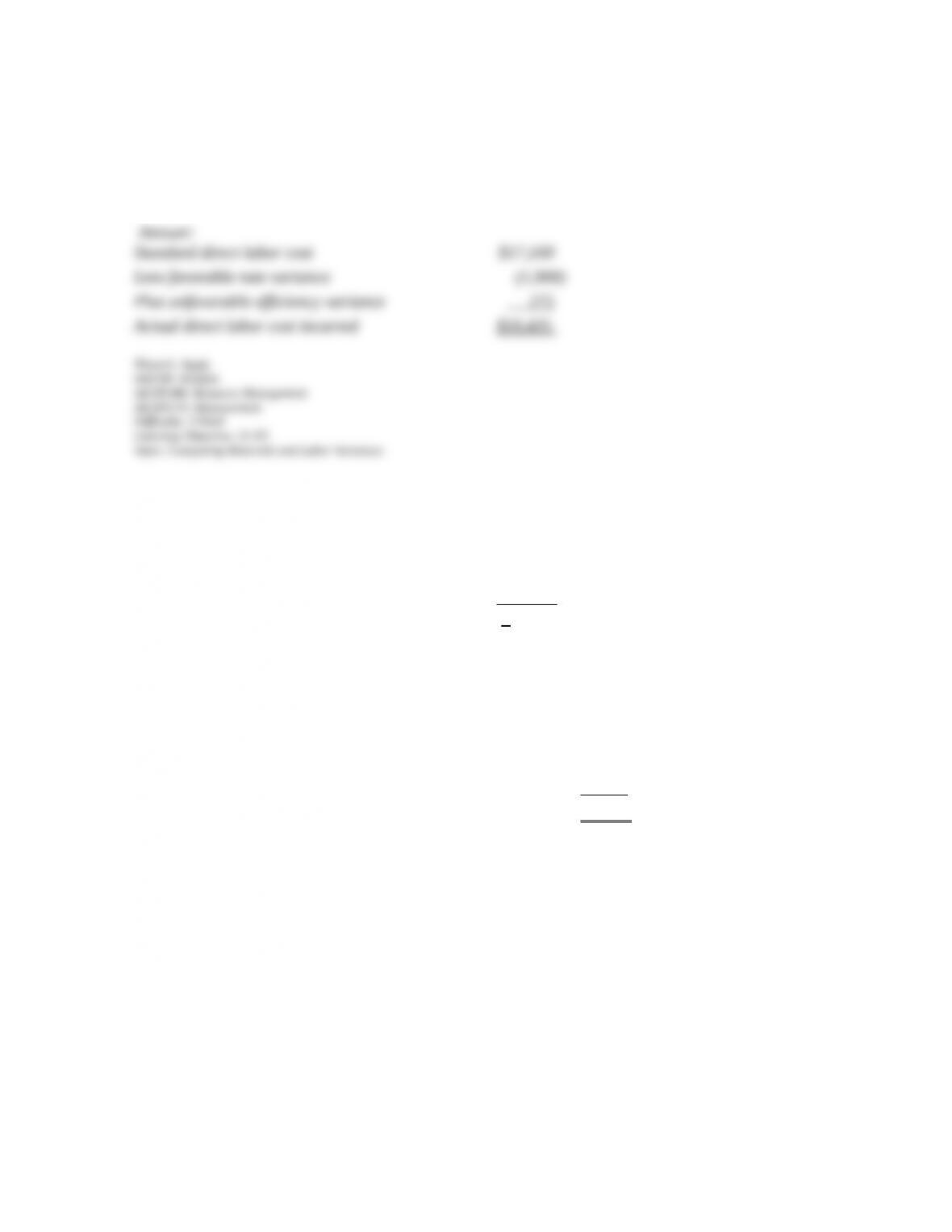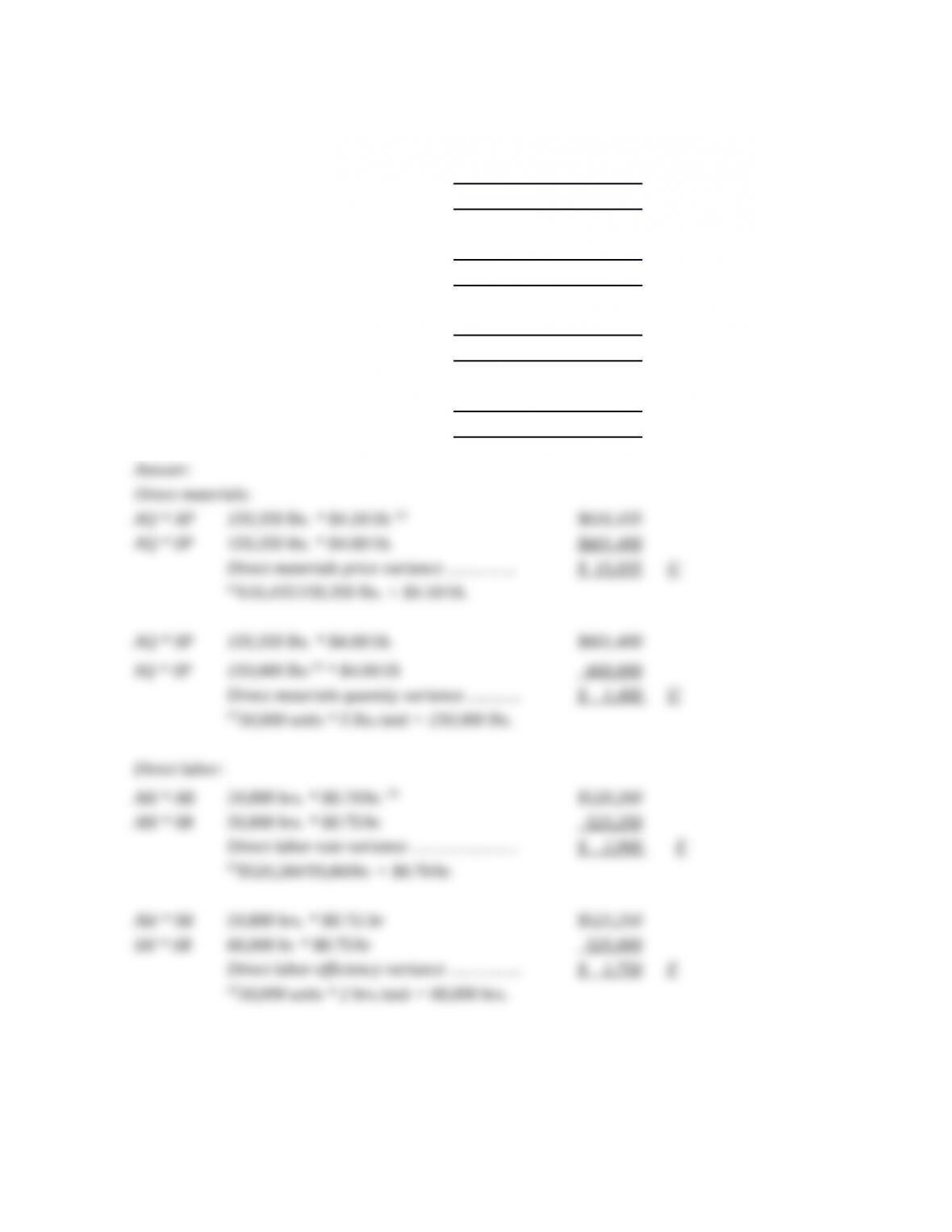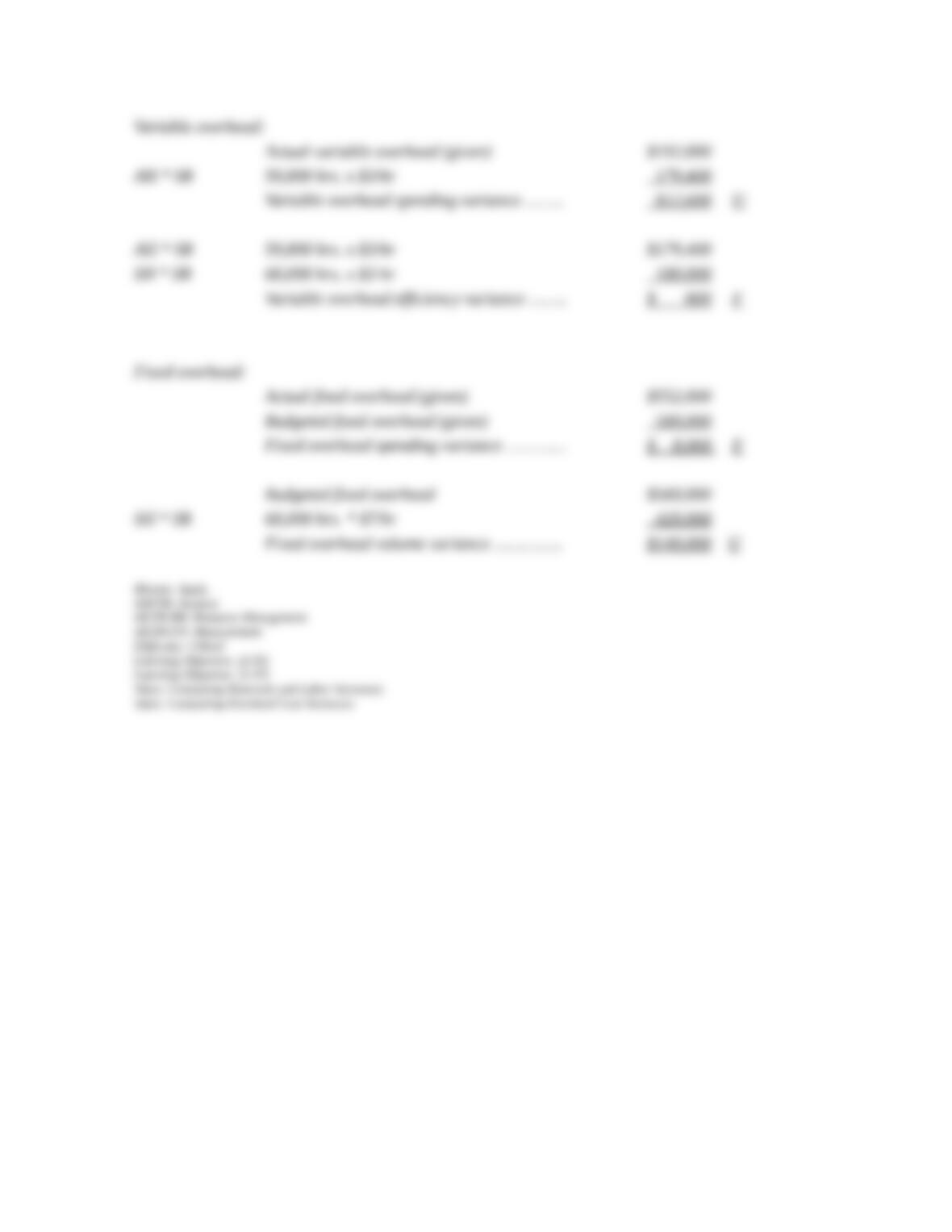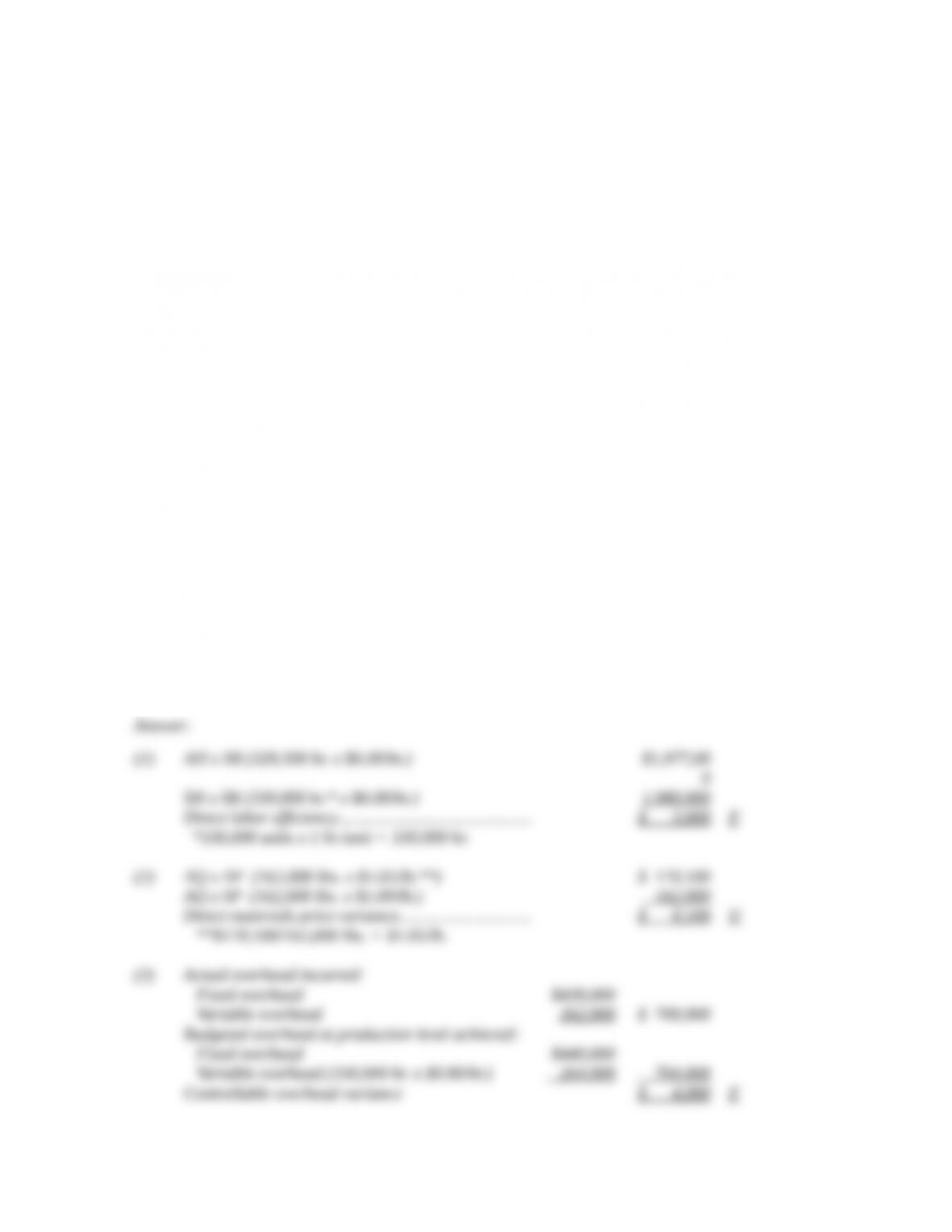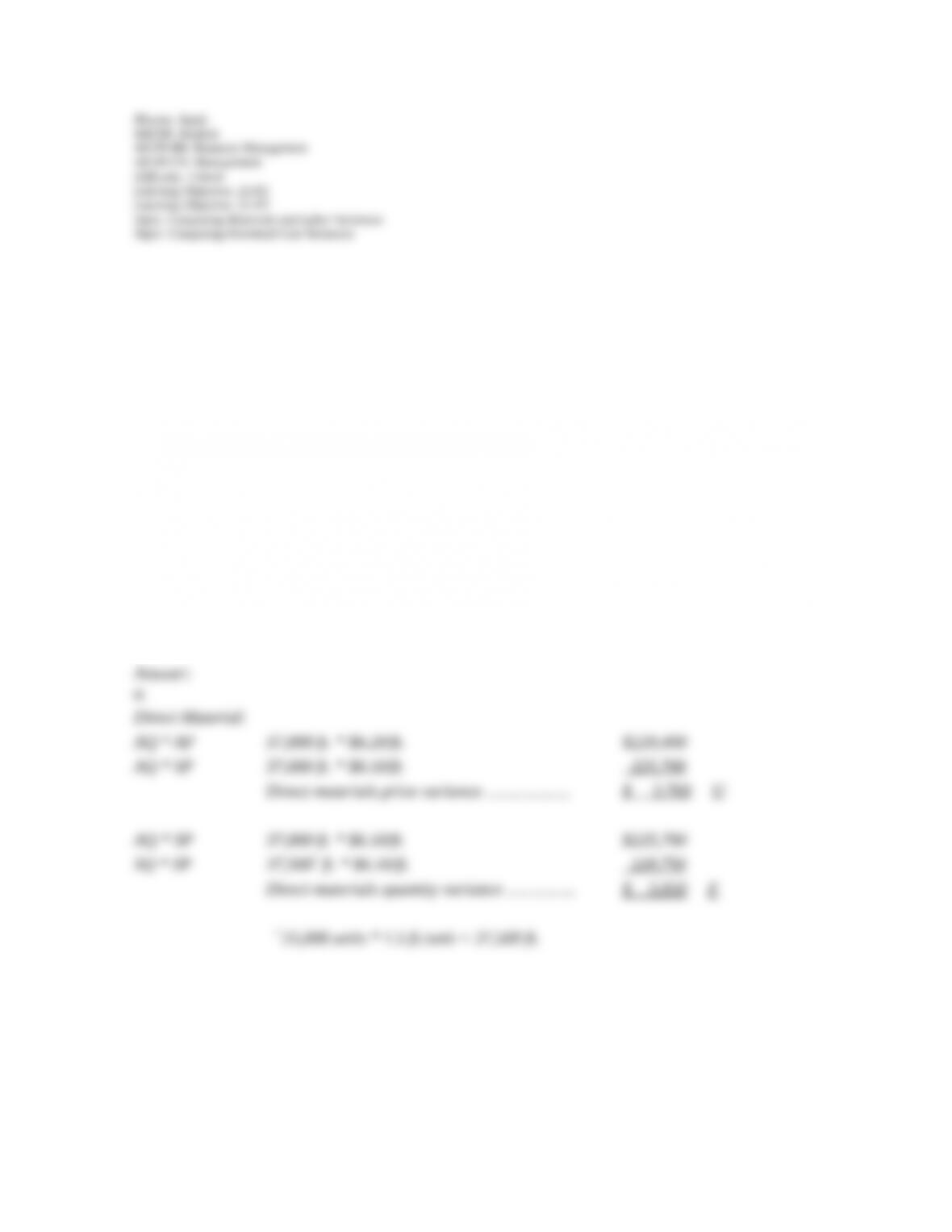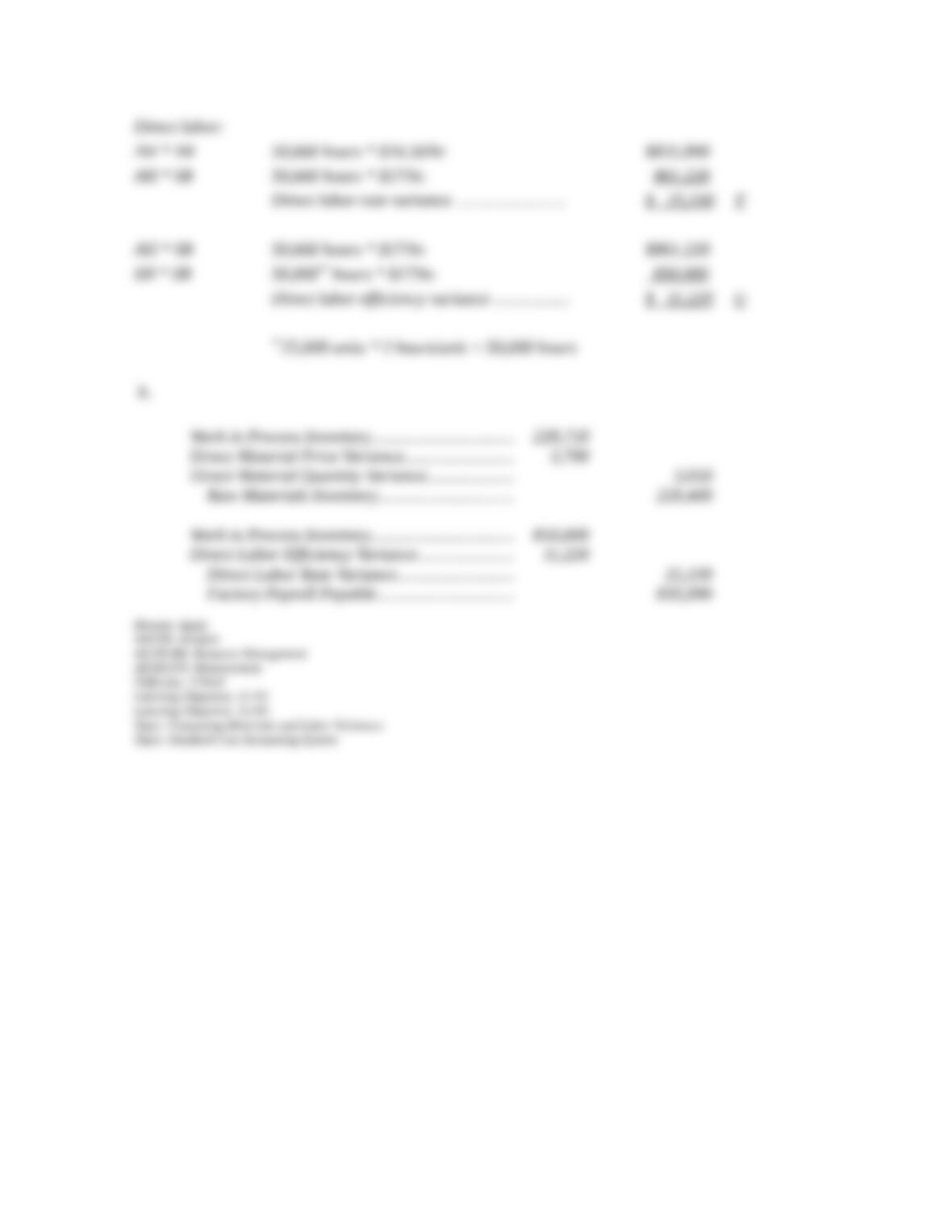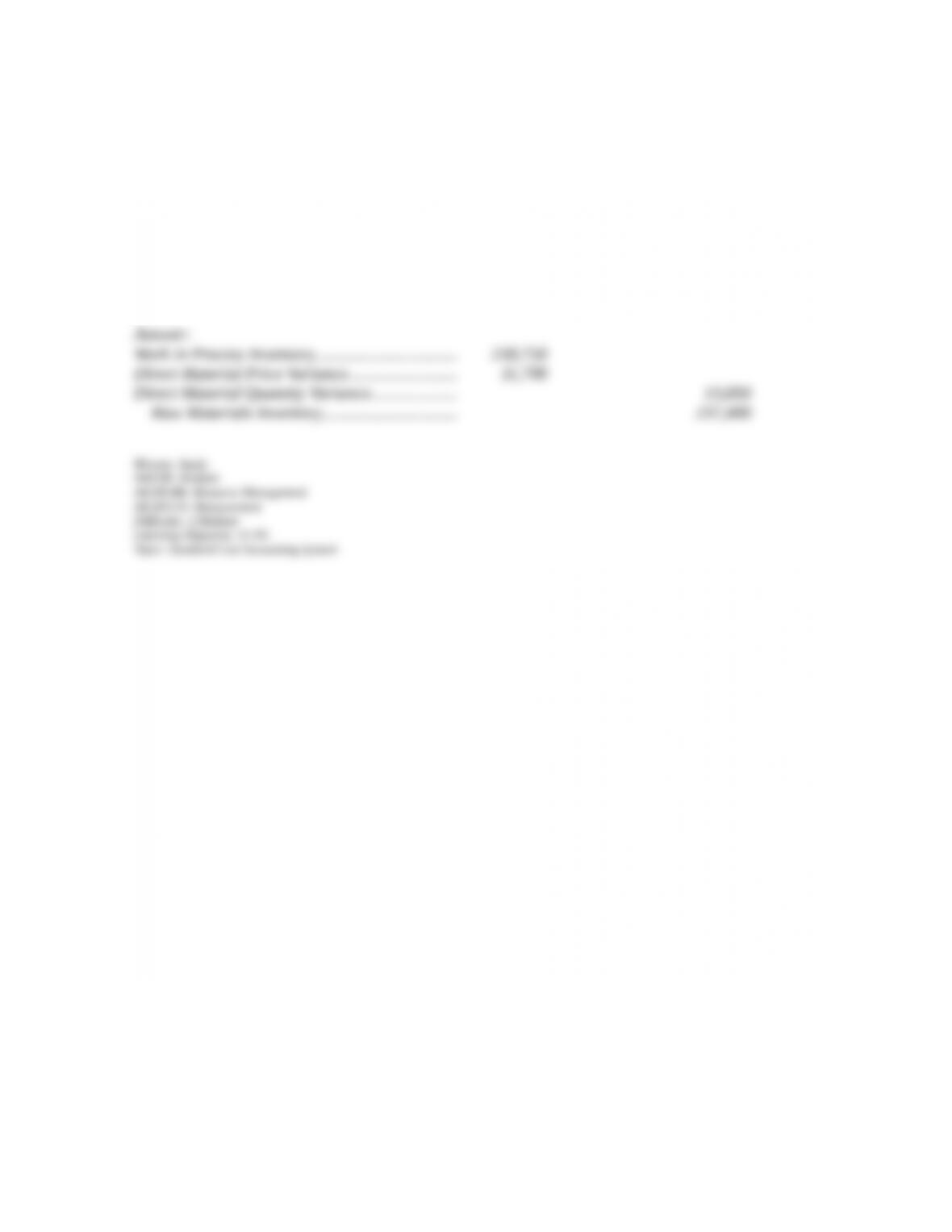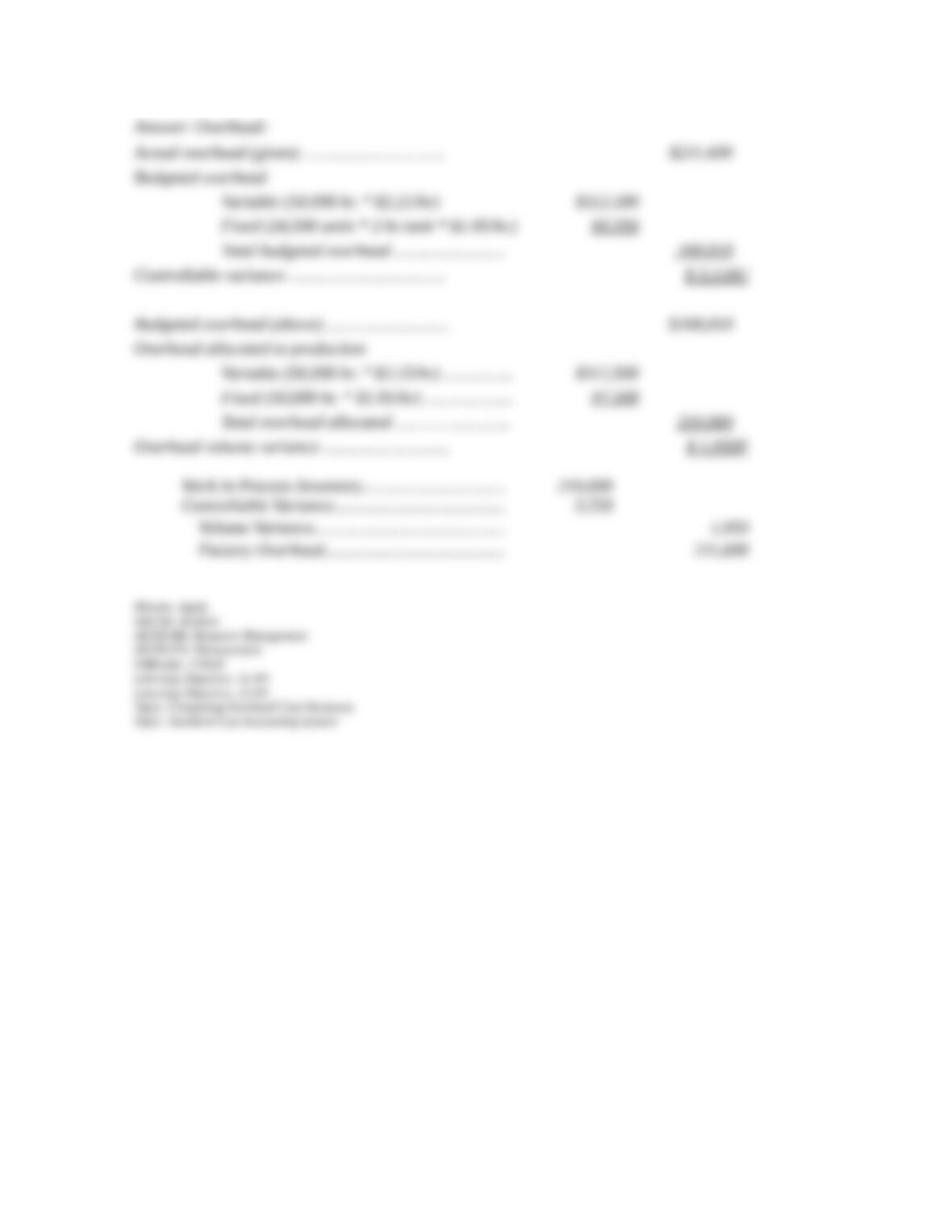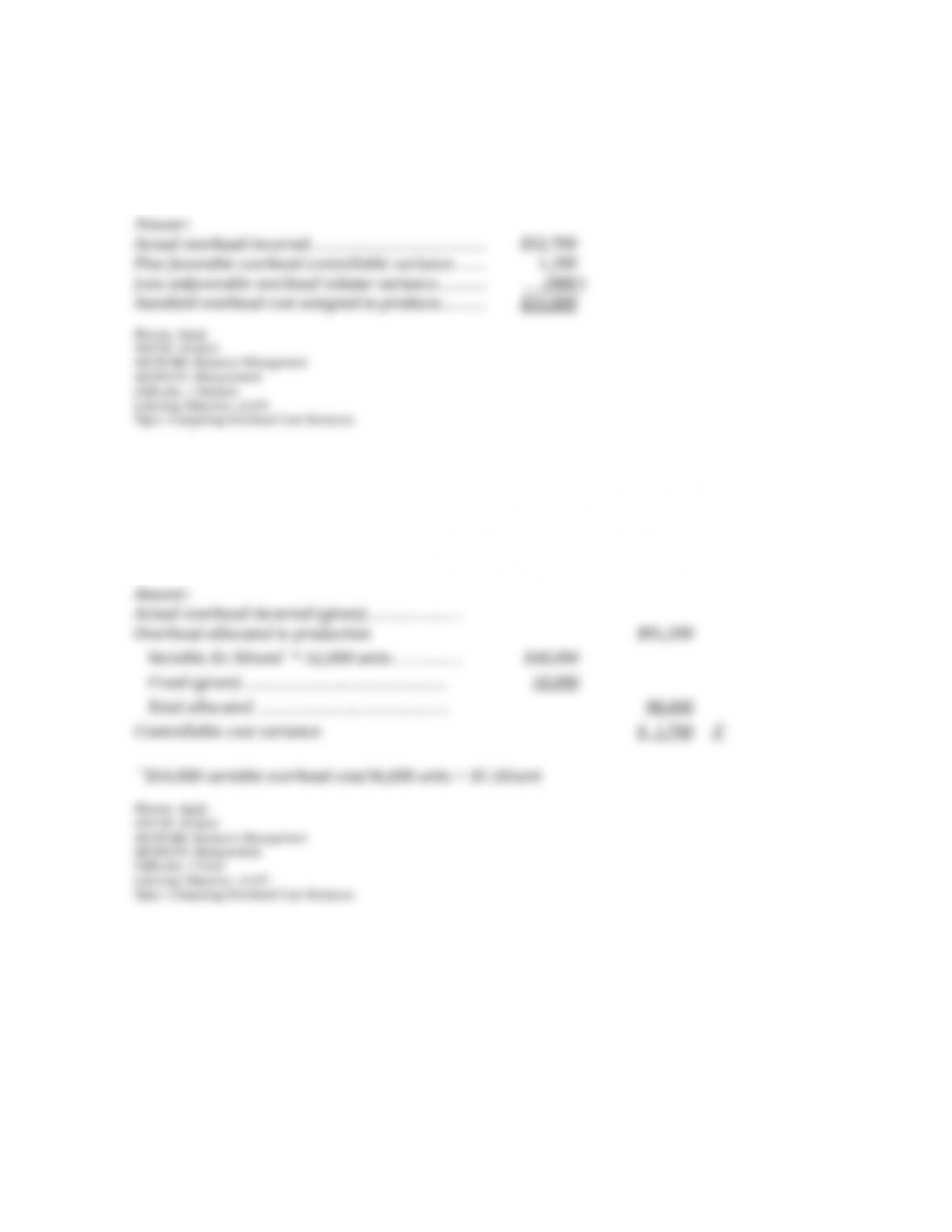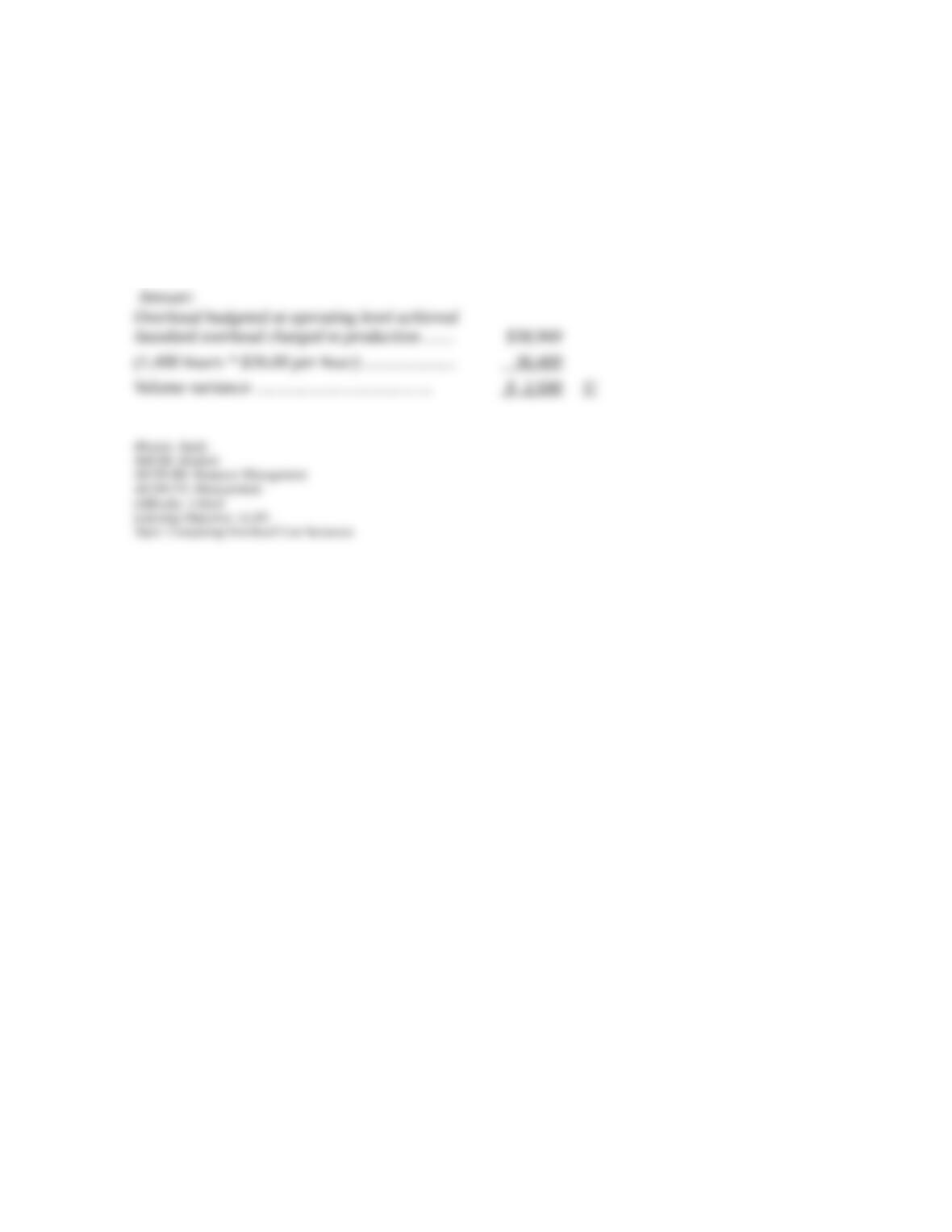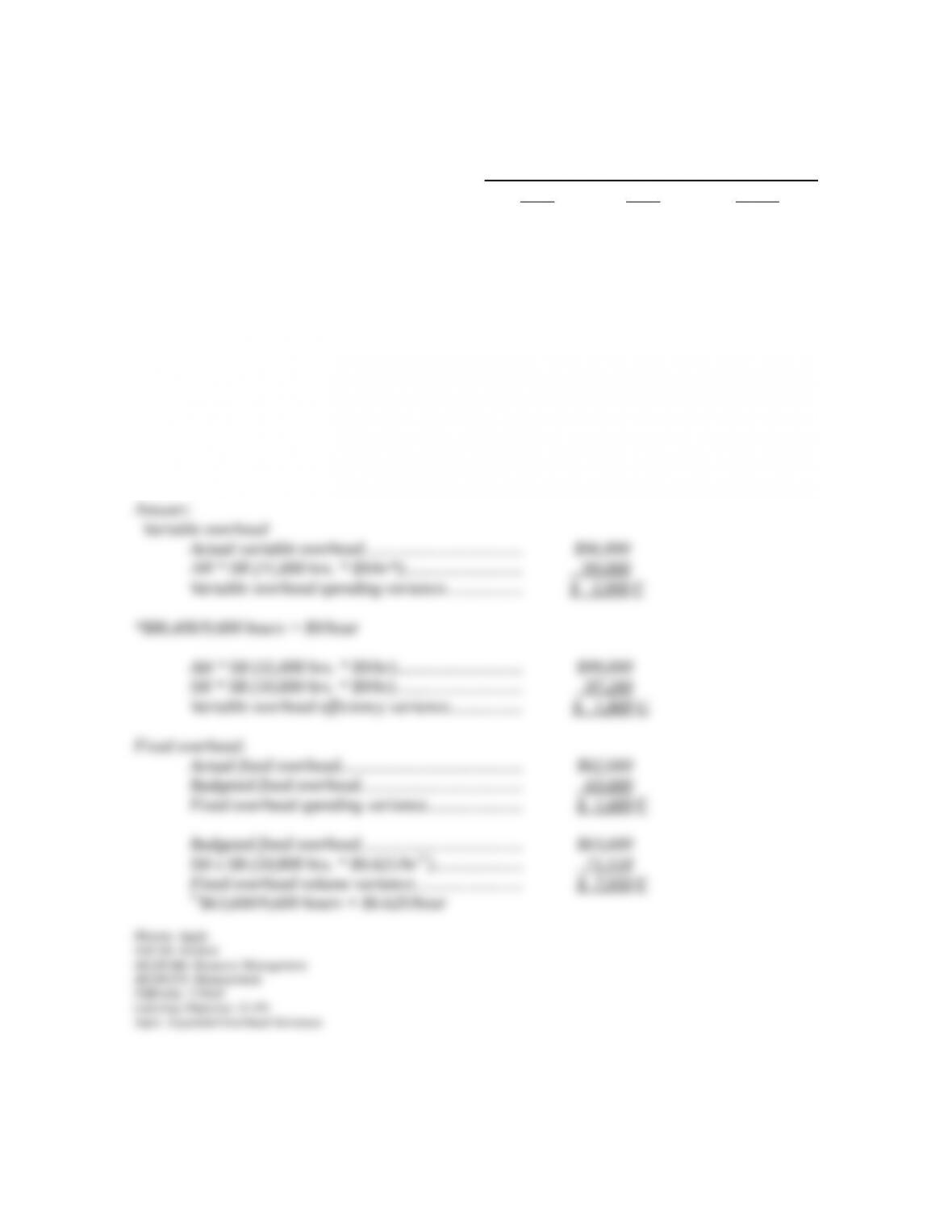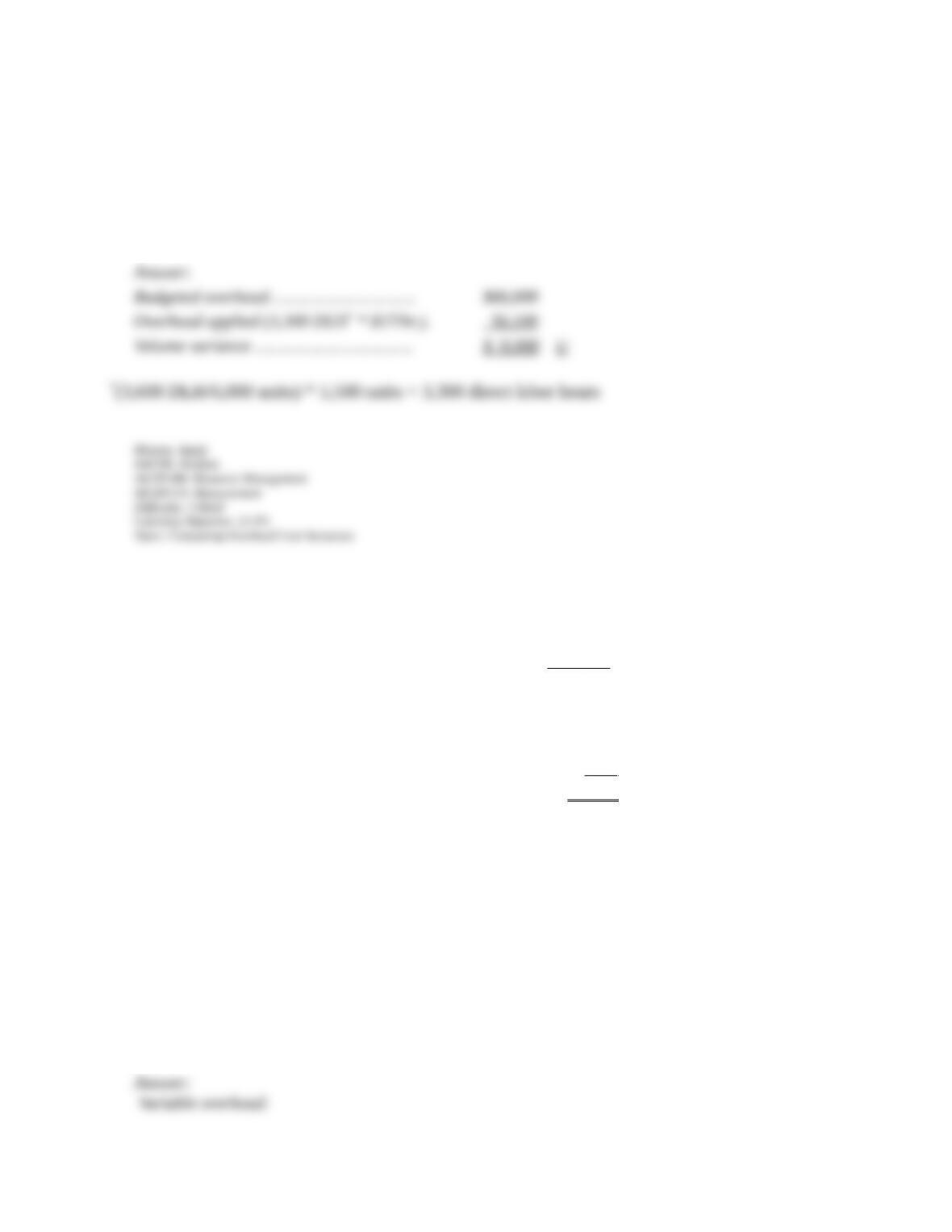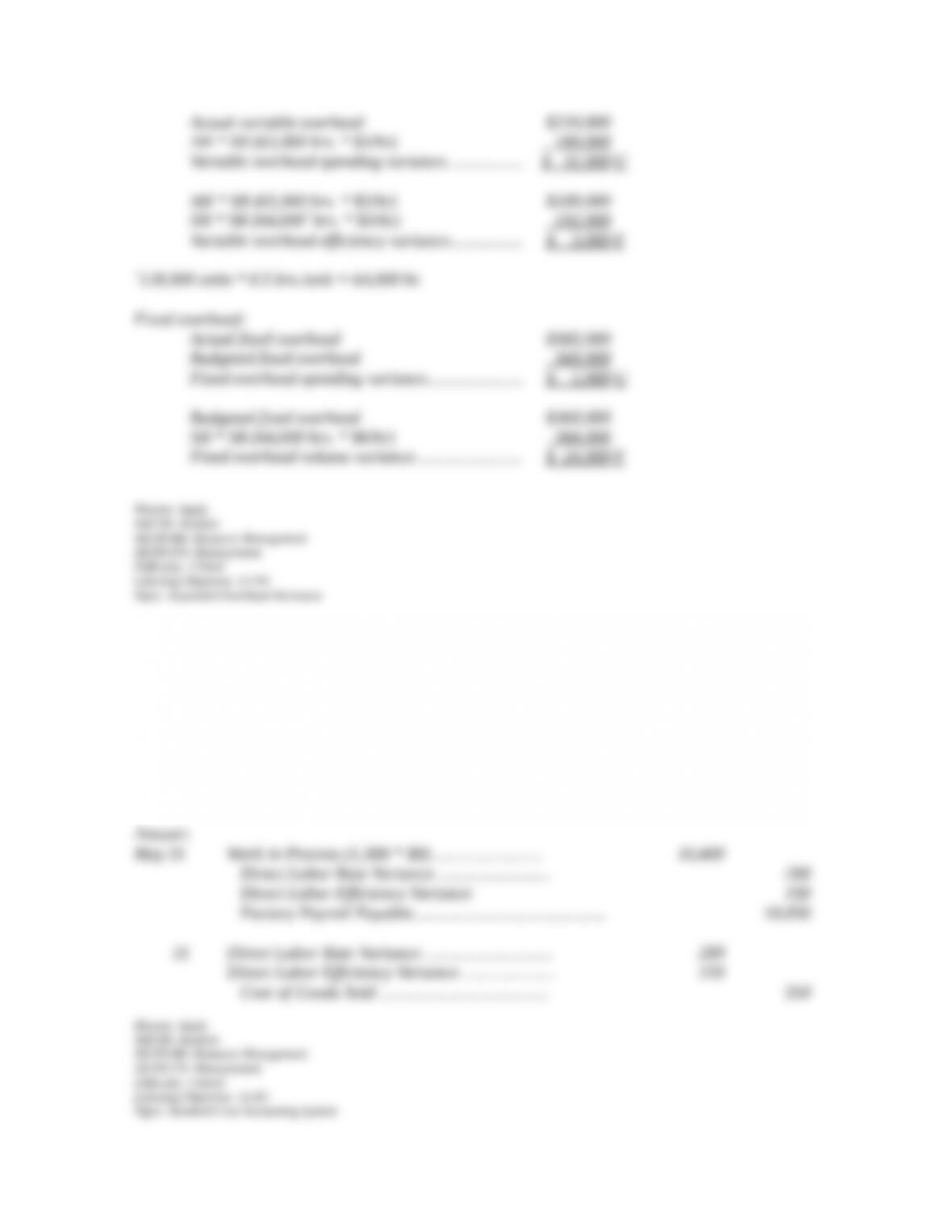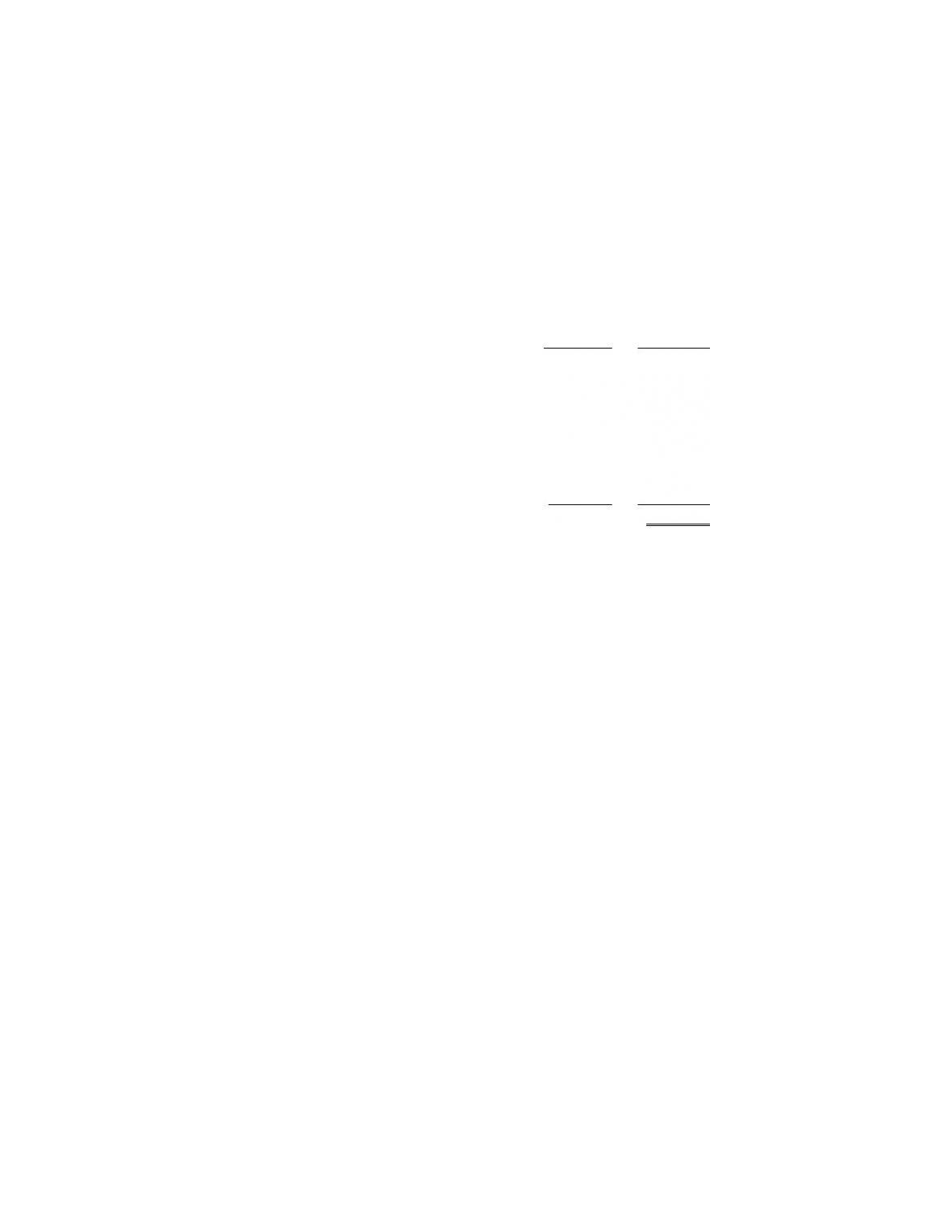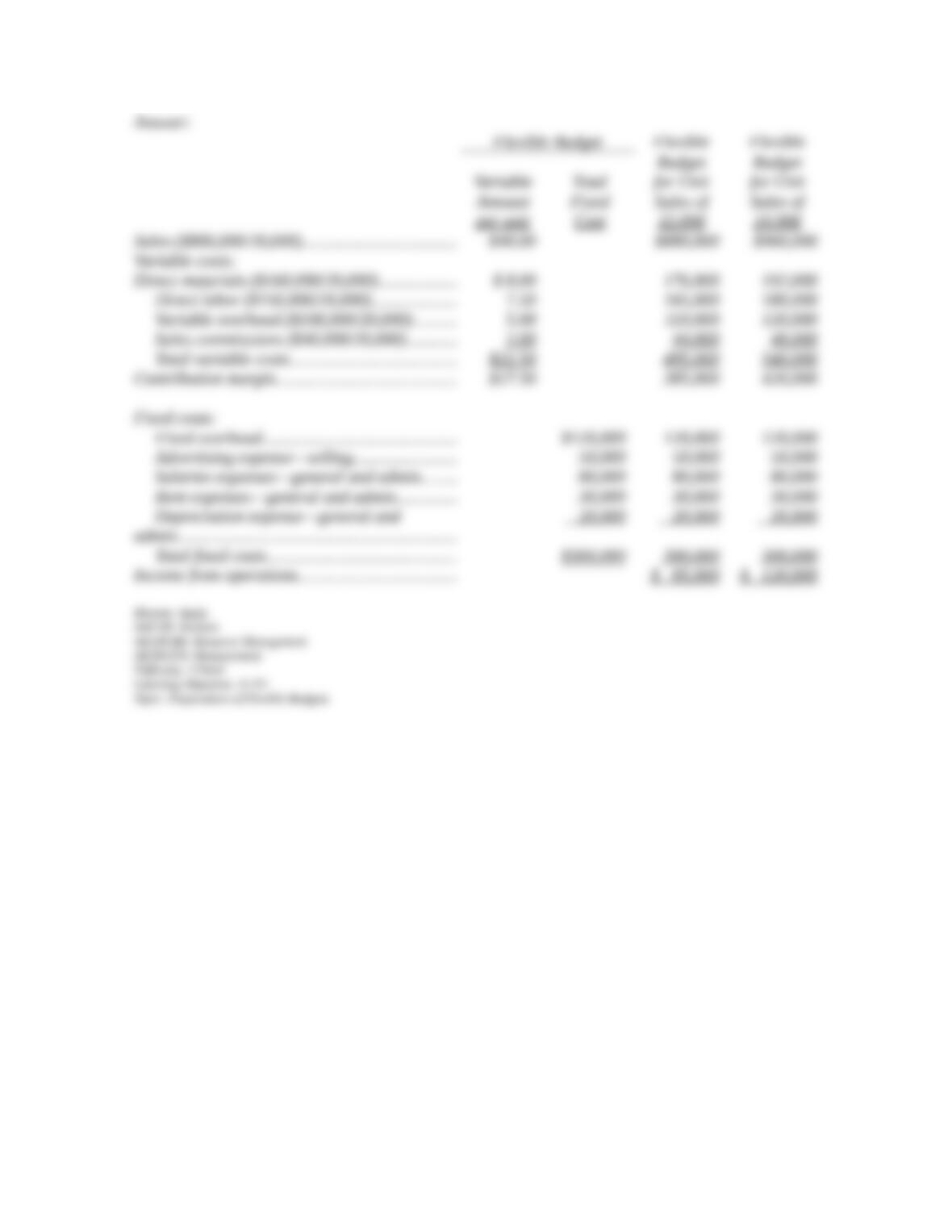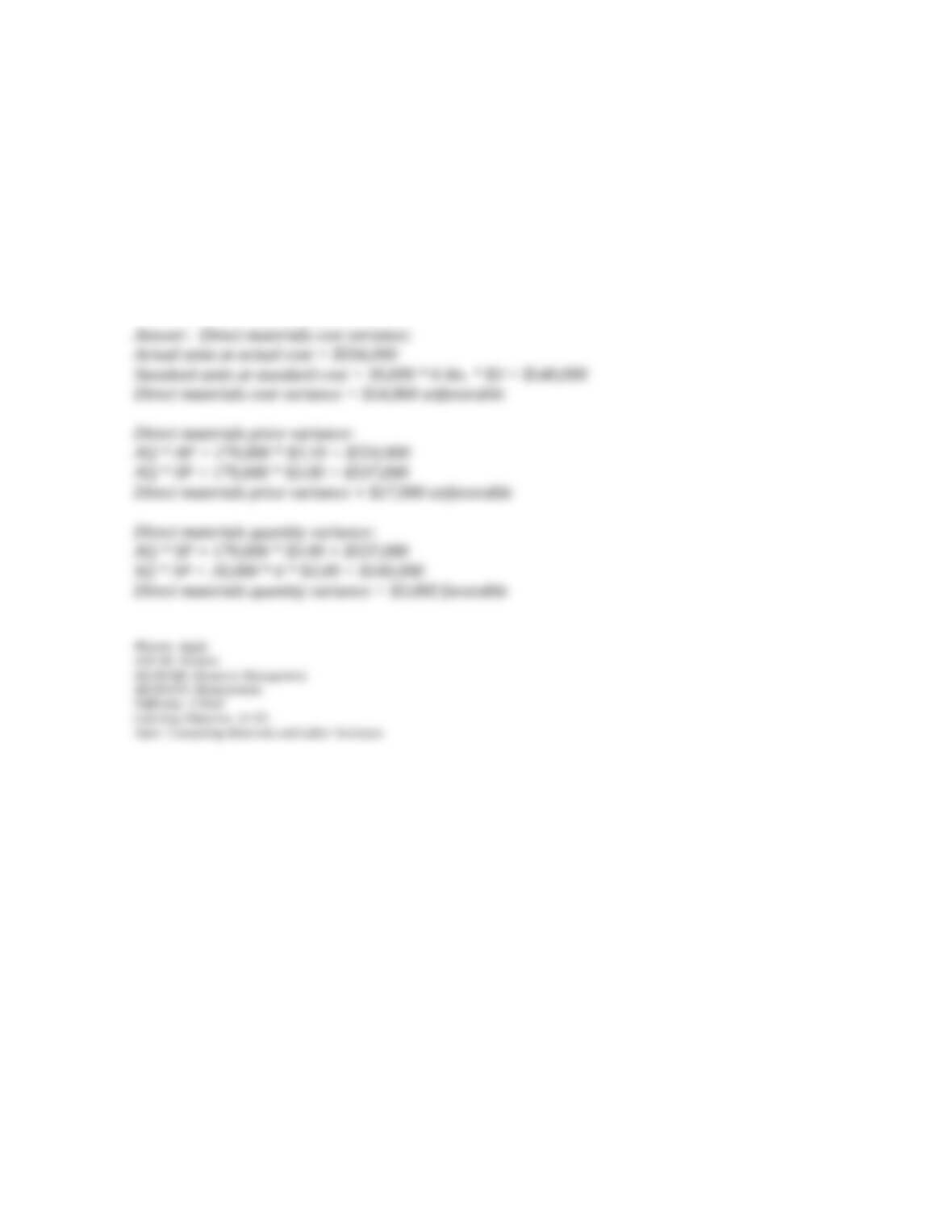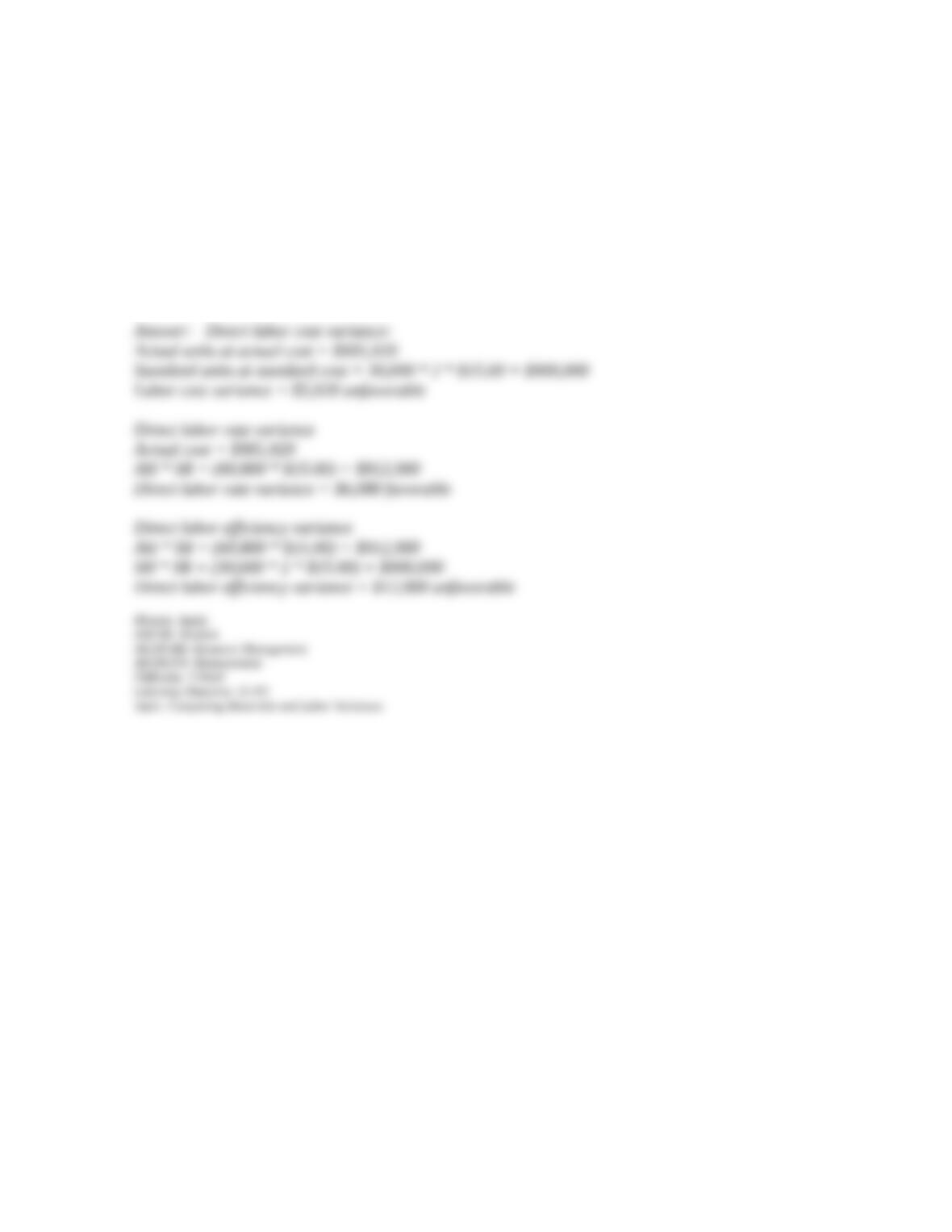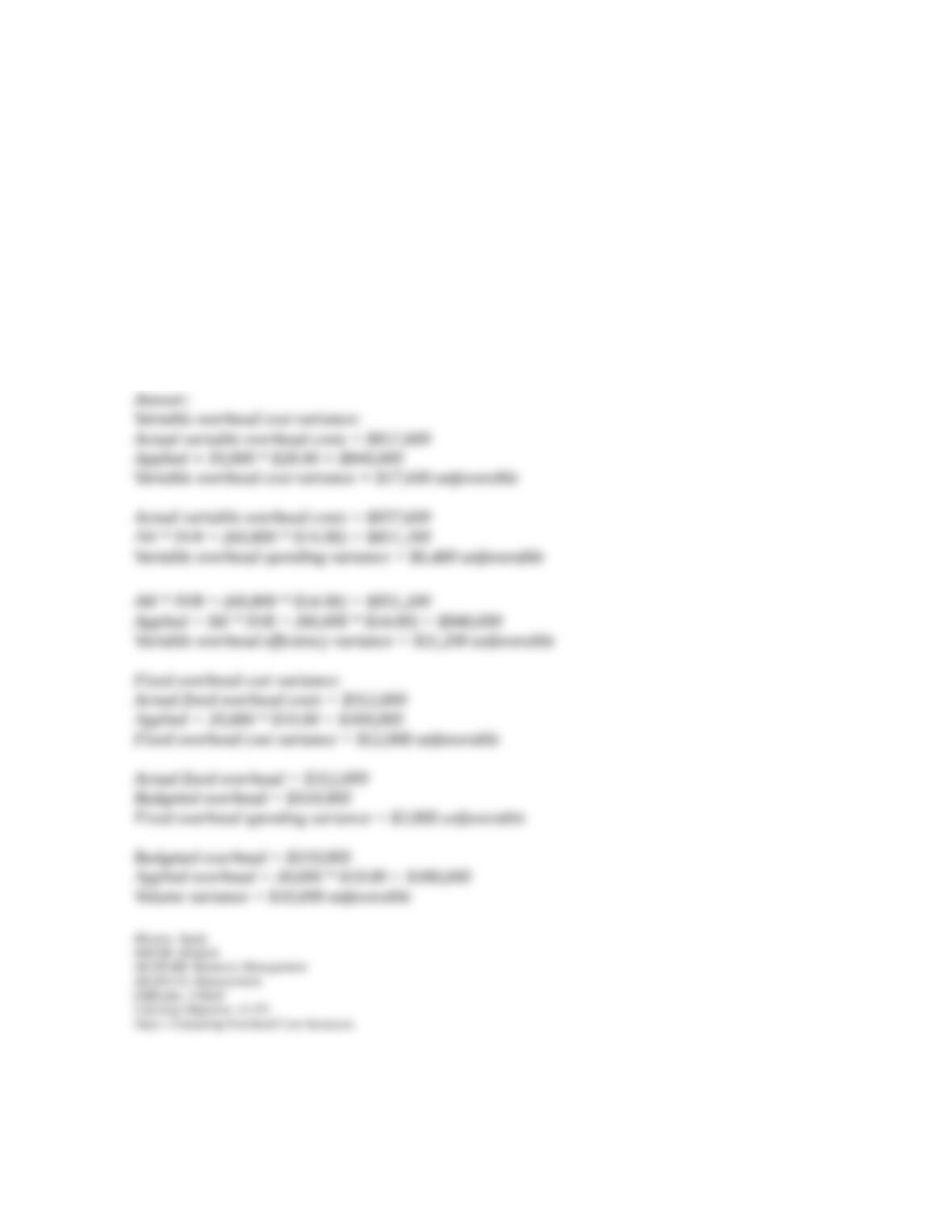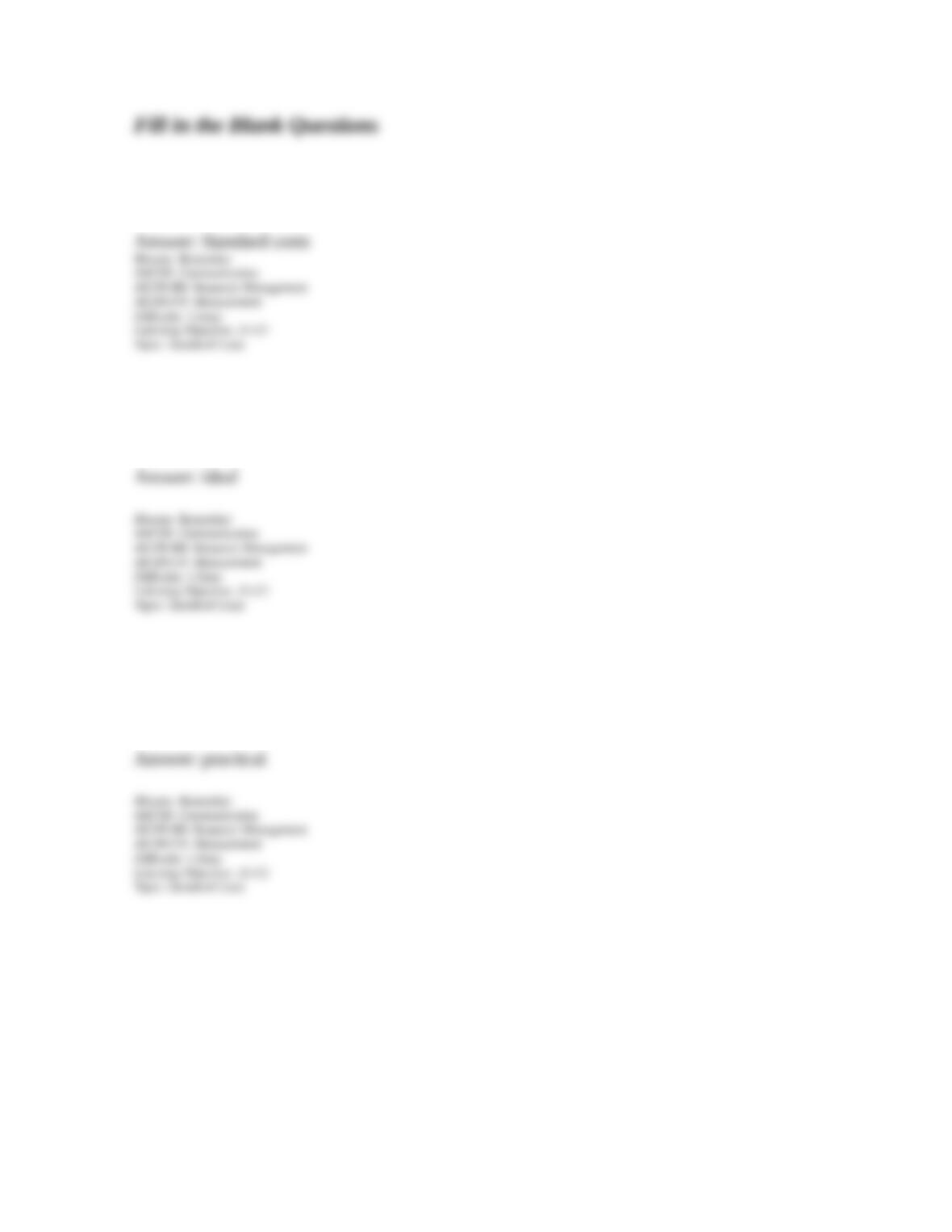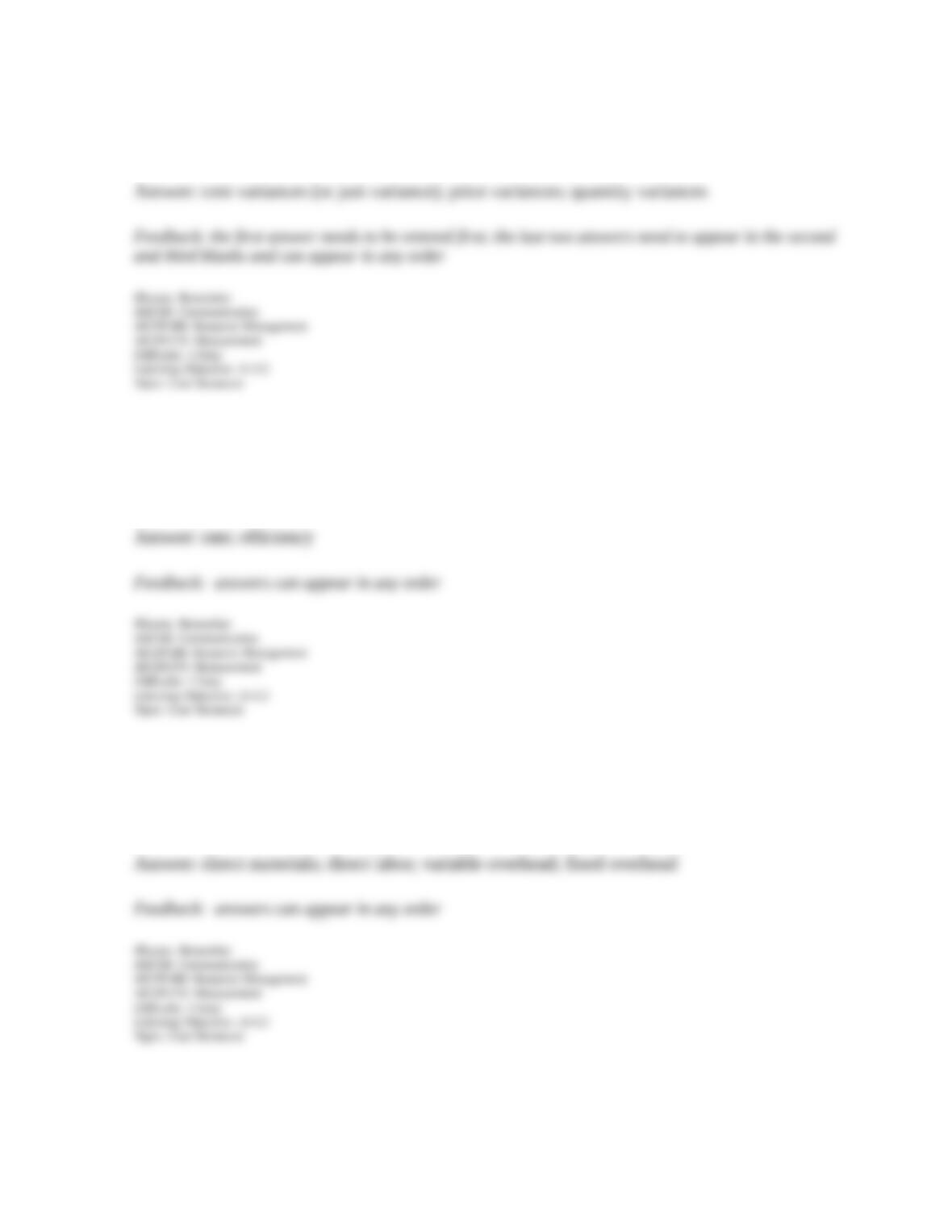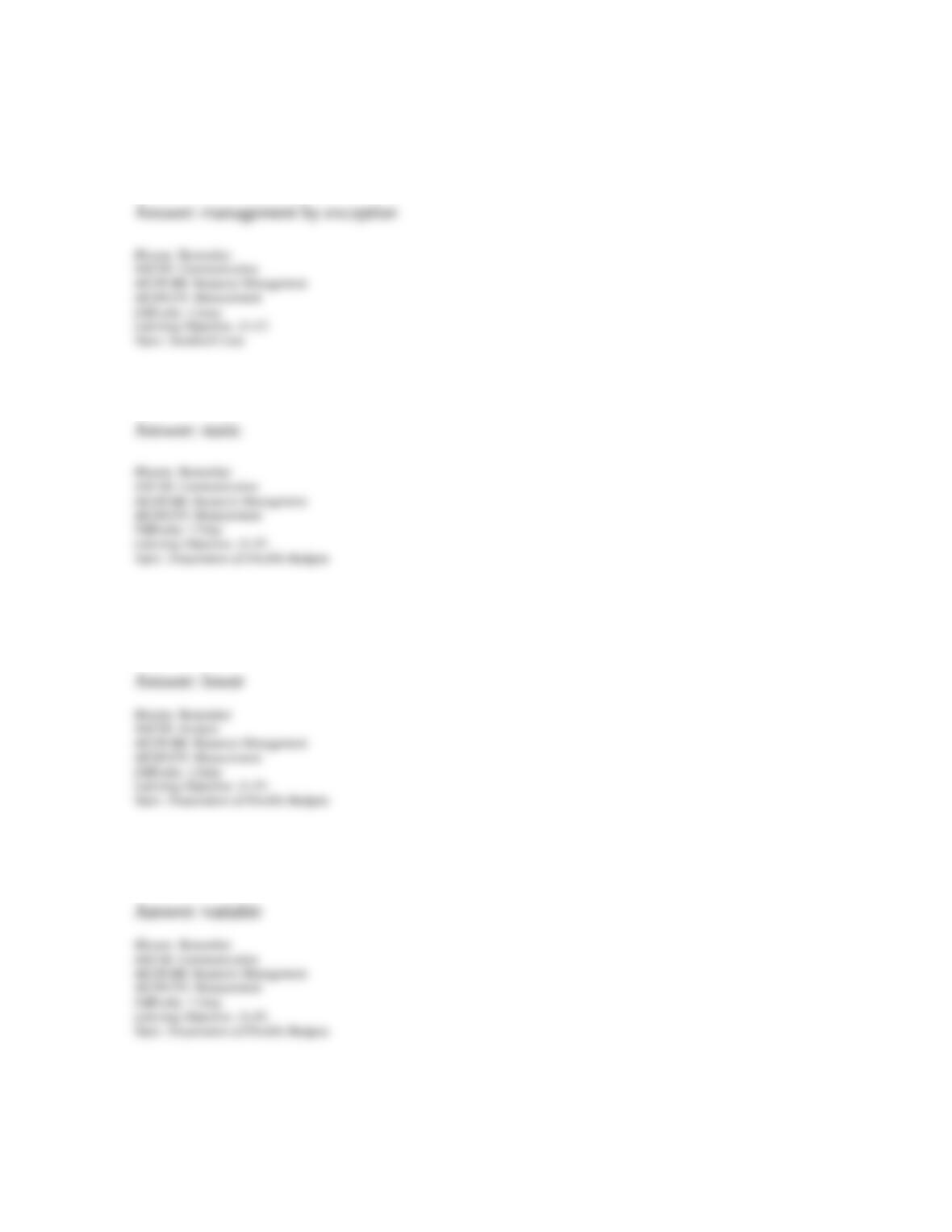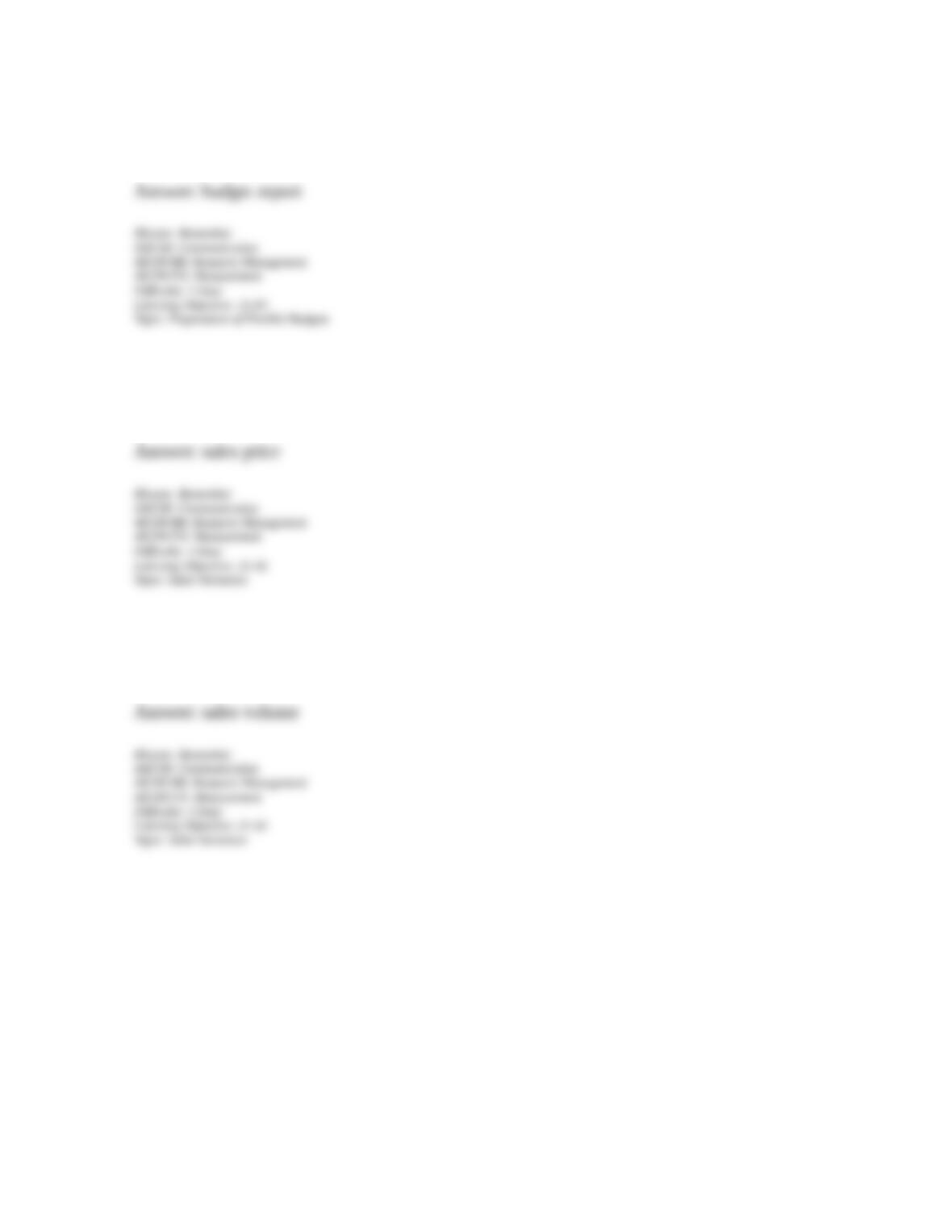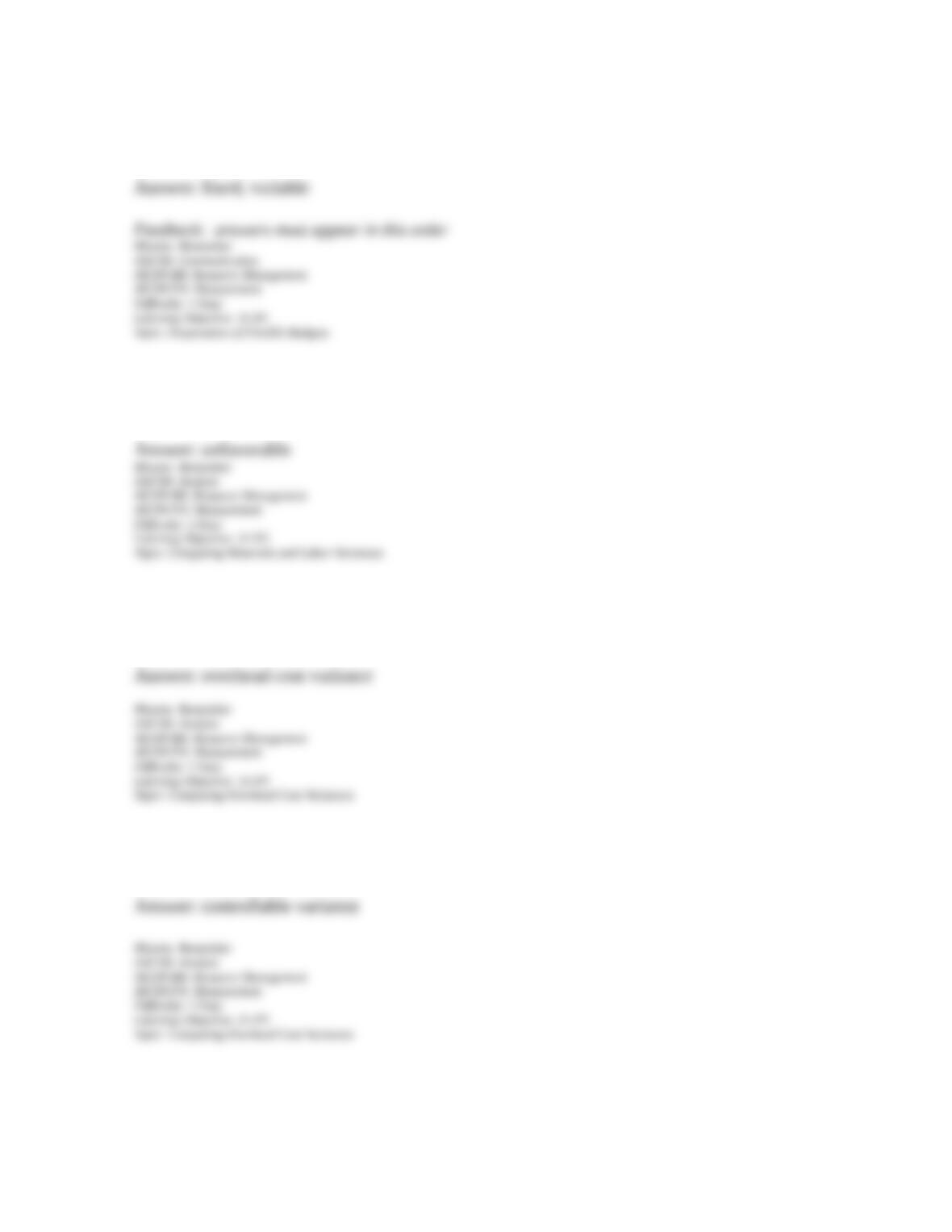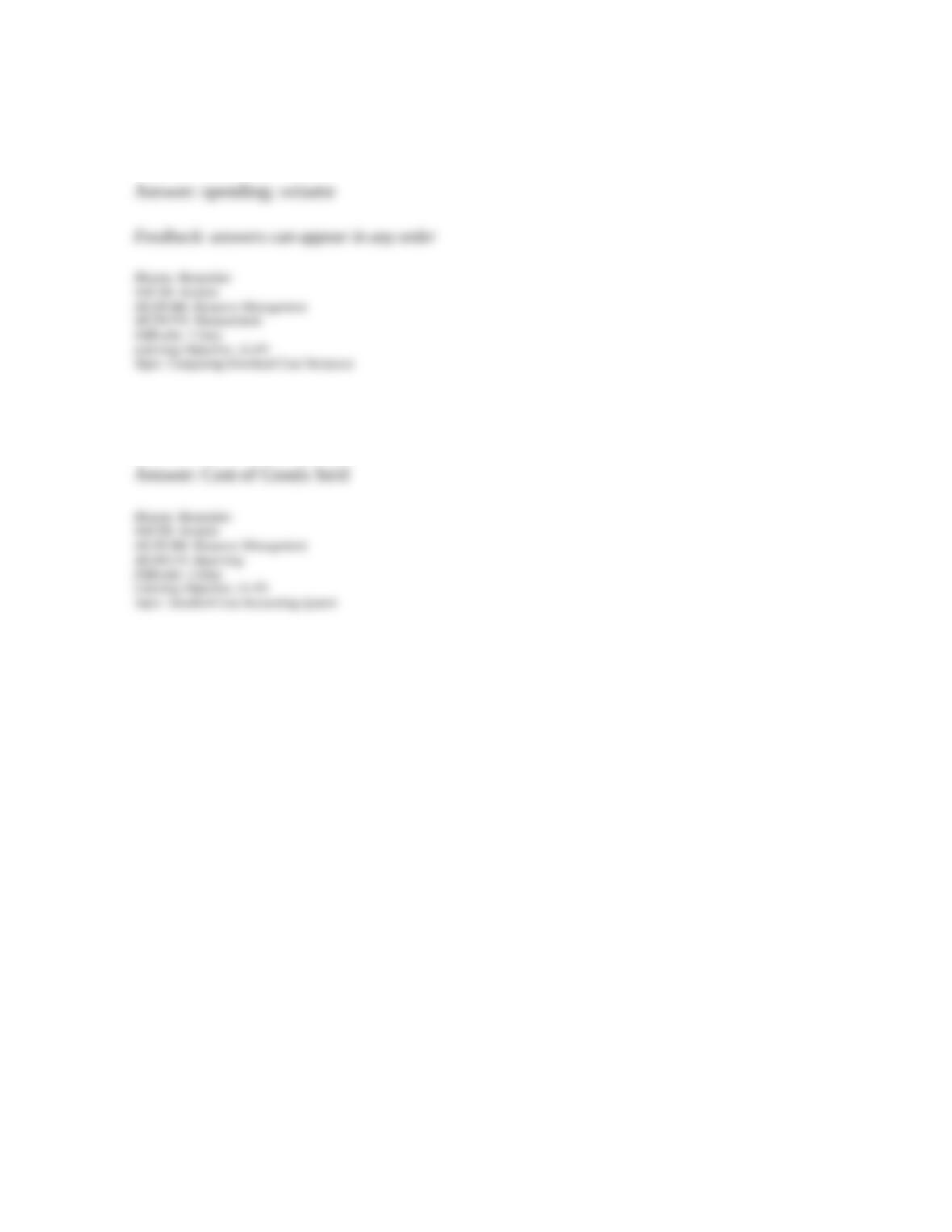170. The following information comes from the flexible budget performance report of Jackal
Corp. for the current period. Prepare the journal entries to charge direct materials and direct
labor costs to work in process and the materials and labor variances to their proper accounts.
Direct materials actual cost………………………… $237,400
Direct materials standard cost …………………… $238,750
Materials price variance…………………………. $11,700 U
Materials quantity variance………………………… $13,050 F
171. The following information comes from the records of Magno Co. for the current period.
a. Compute the overhead controllable and volume variances. In each case, state whether the
variance is favorable or unfavorable.
b. Prepare the journal entries to charge overhead costs to work in process and the overhead
variances to their proper accounts.
Actual costs and quantities:
Direct materials used ………………………... 38,000 feet @ $6.20 per foot
Direct labor hours used ……………………… 50,660 hours
Direct labor rate per hour ……………………. $16
Factory overhead ……………………………. $211,600
25,000 units were produced during the period.
Standard costs and quantities per unit:
Direct materials ………………………………. 1.5 ft. @ $6.10 per ft.
Direct labor …………………………………… 2 hours @ $17 per hour
Factory overhead (based on budgeted production of 24,500 units)
Variable overhead $2.25/direct labor hour
Fixed overhead $1.95/direct labor hour

























































































